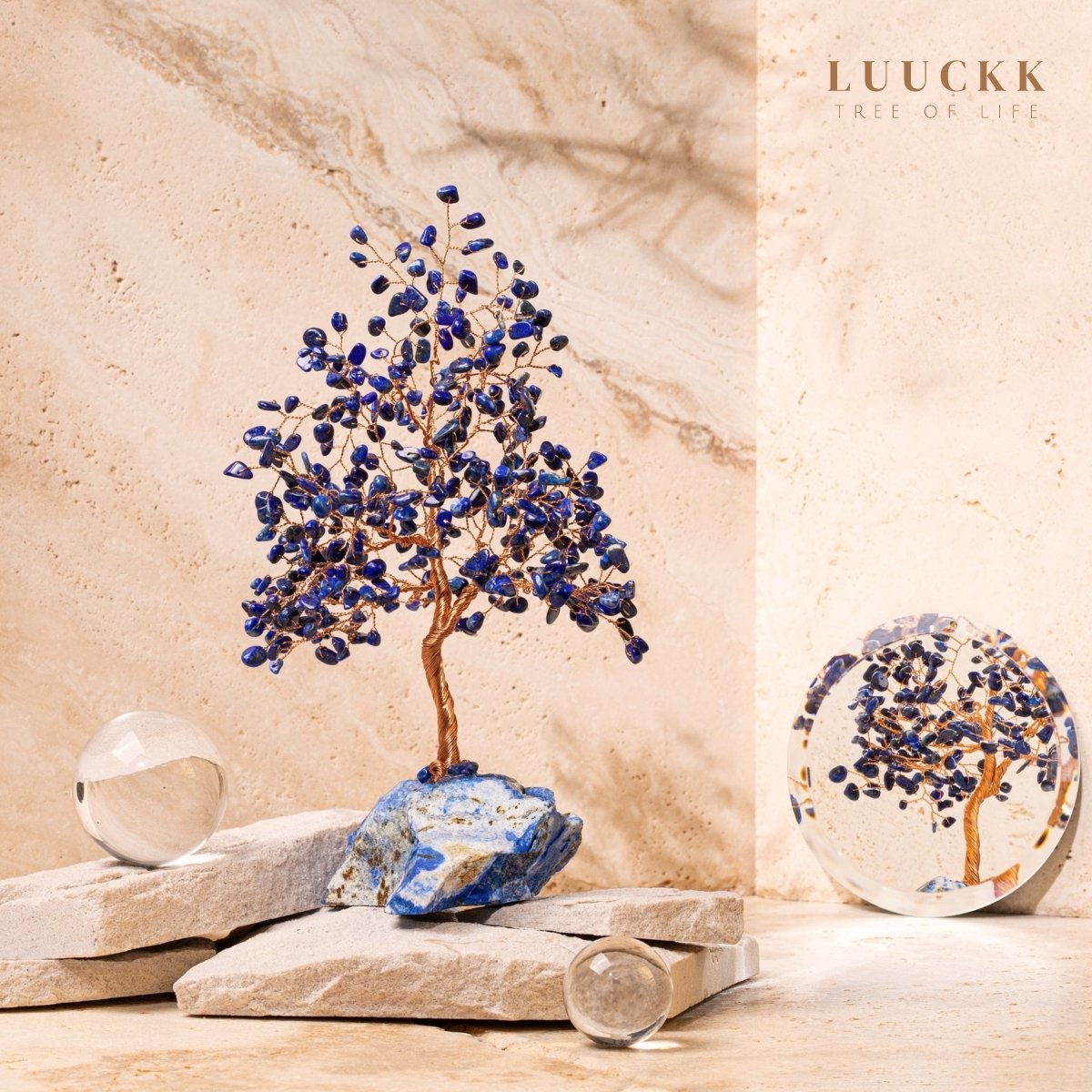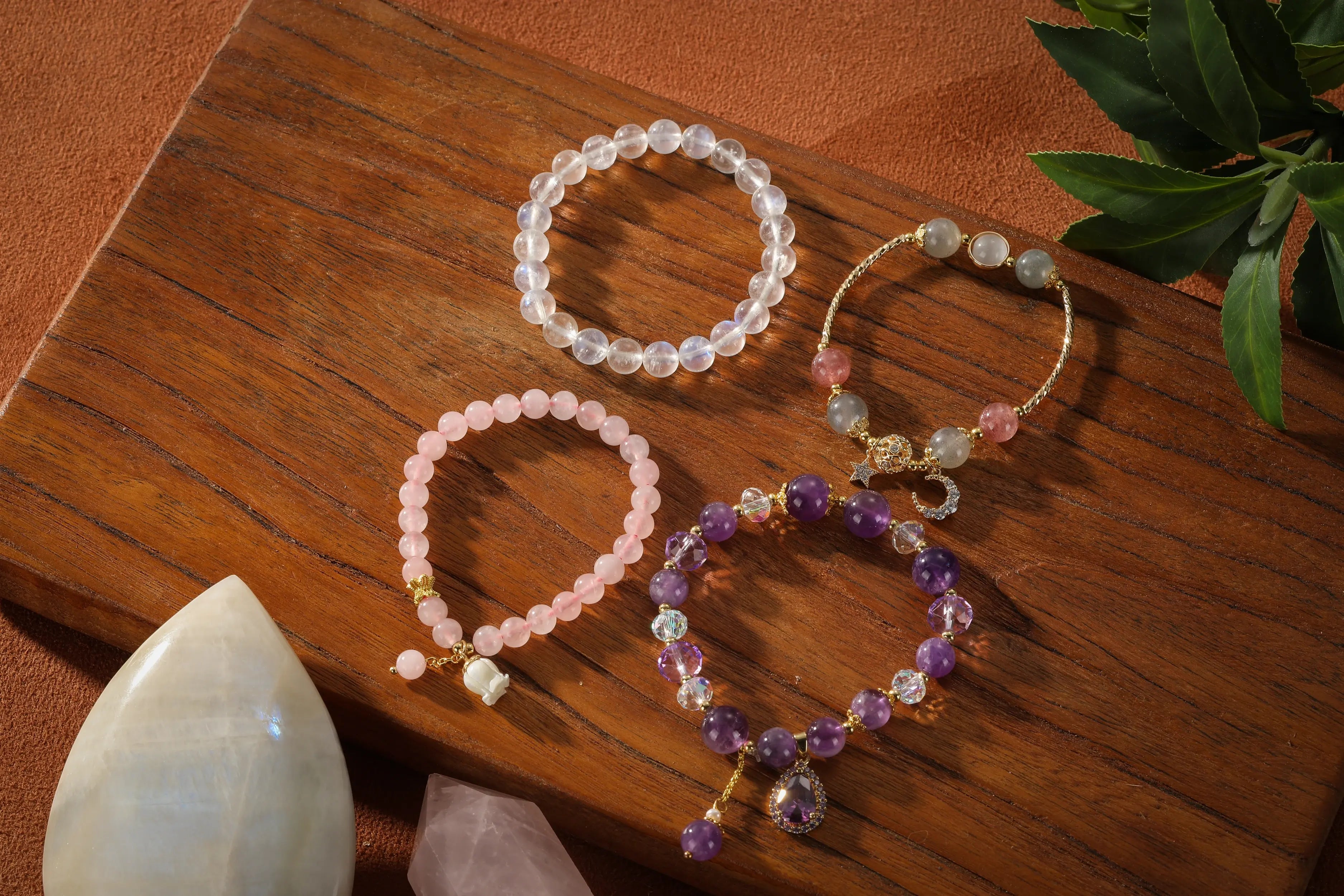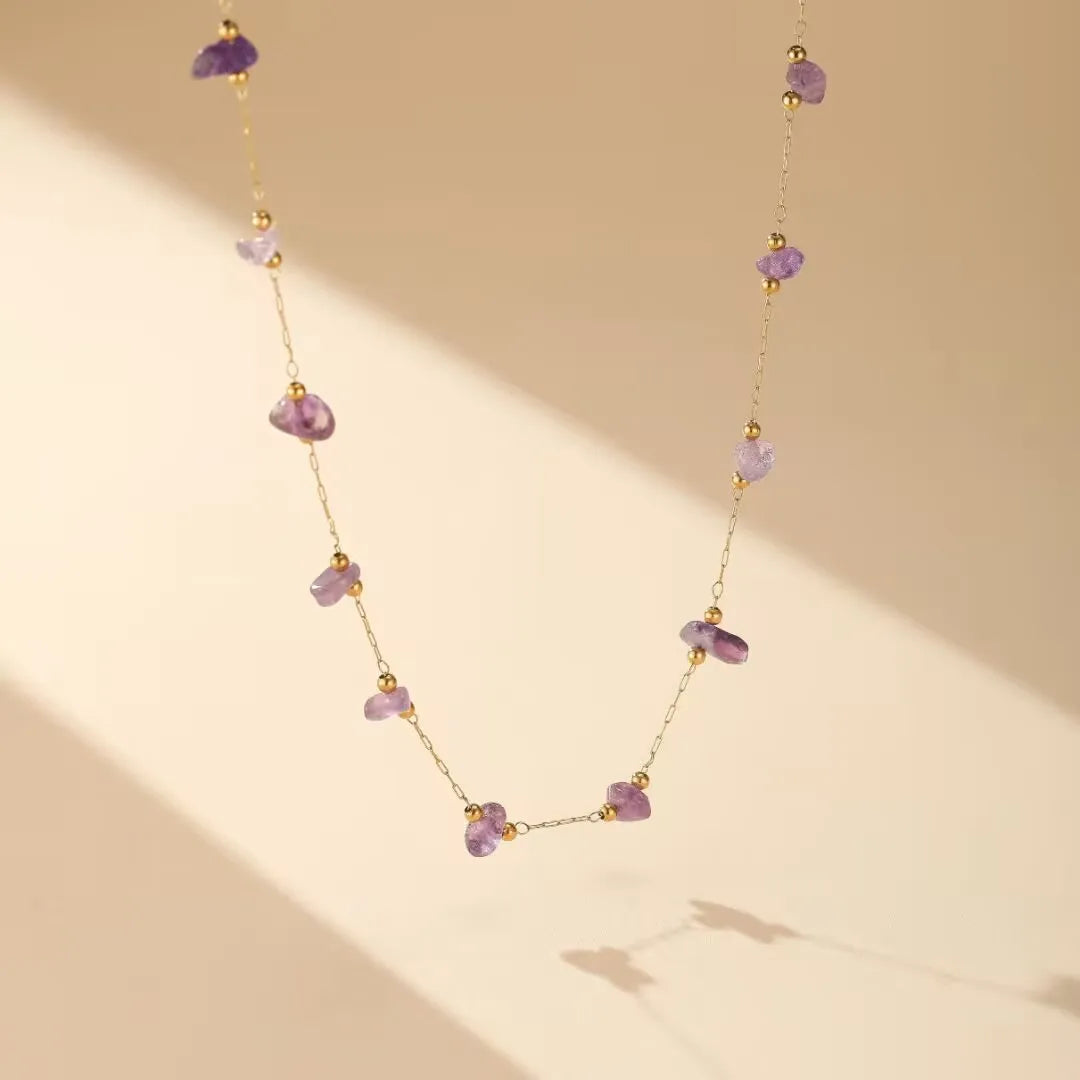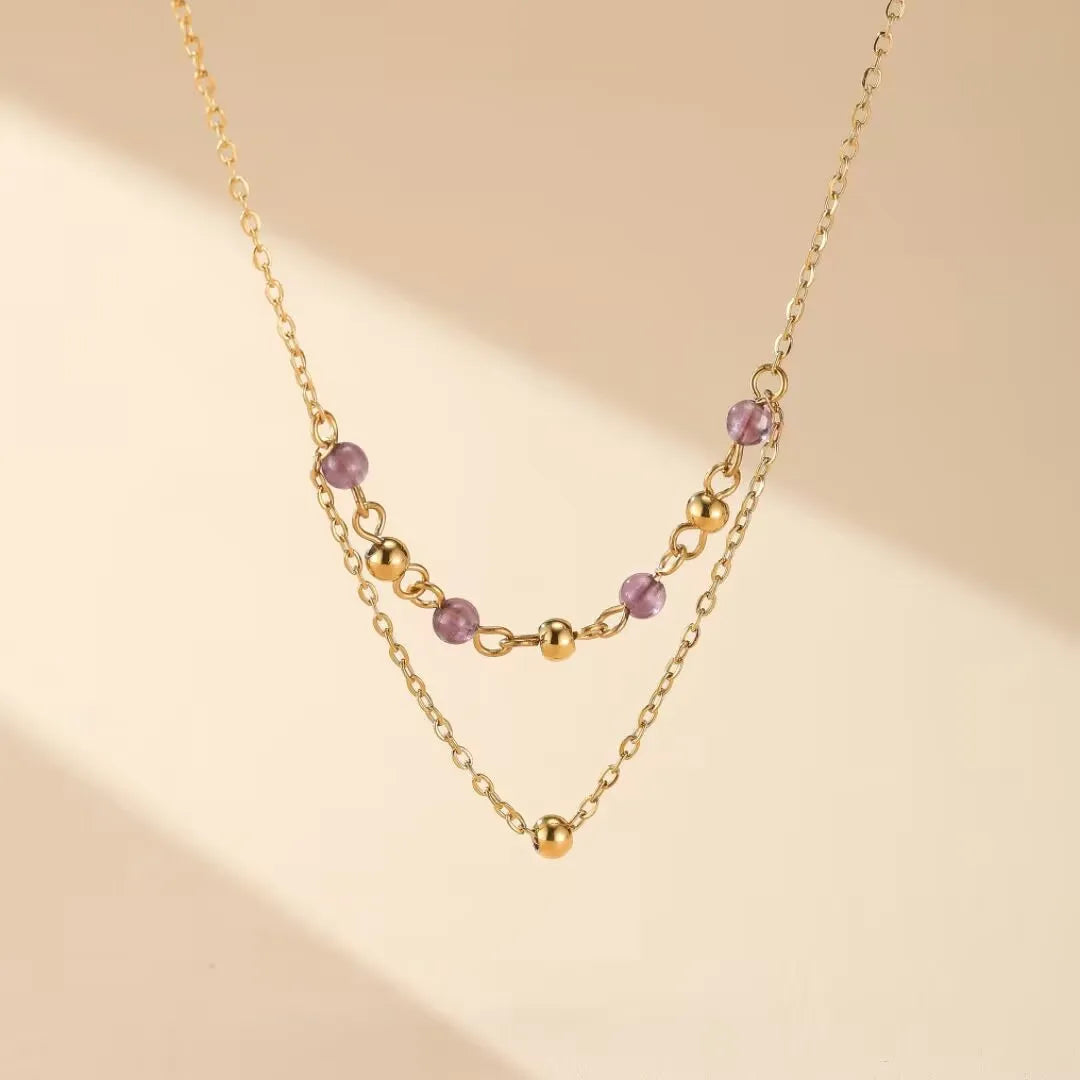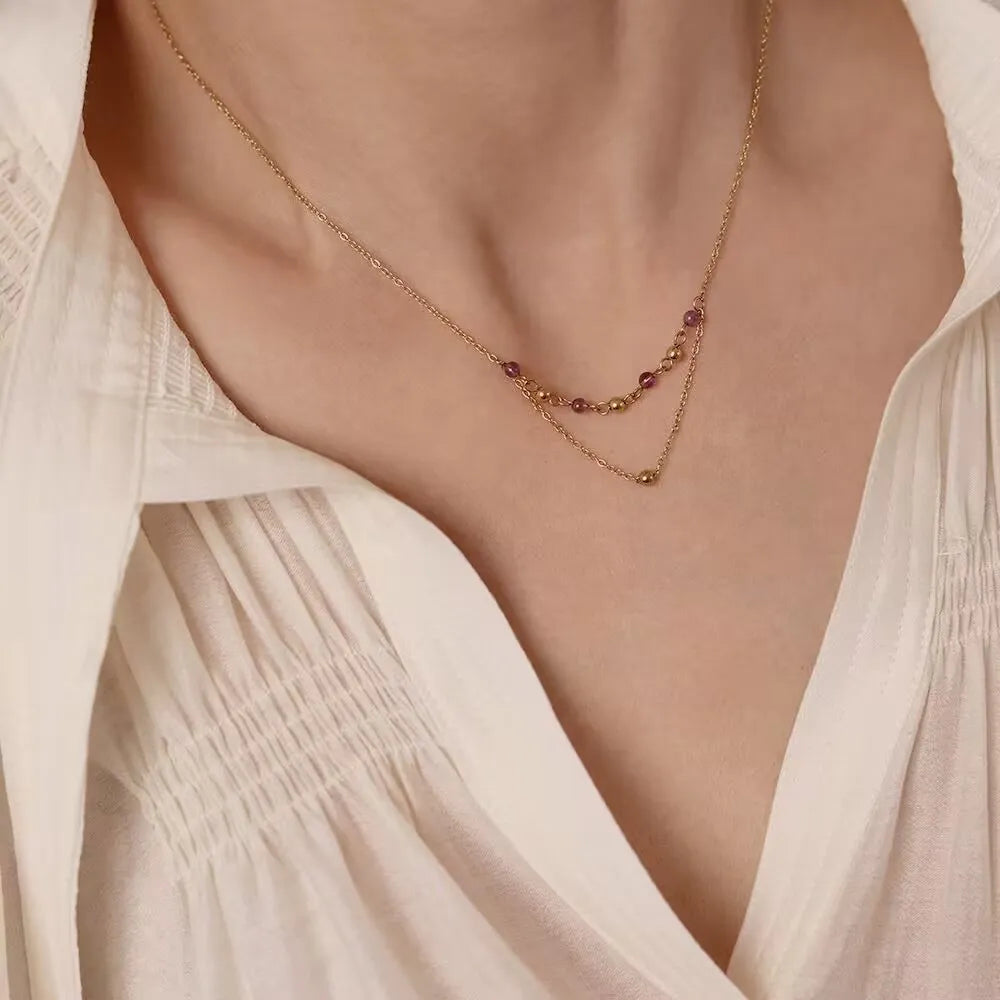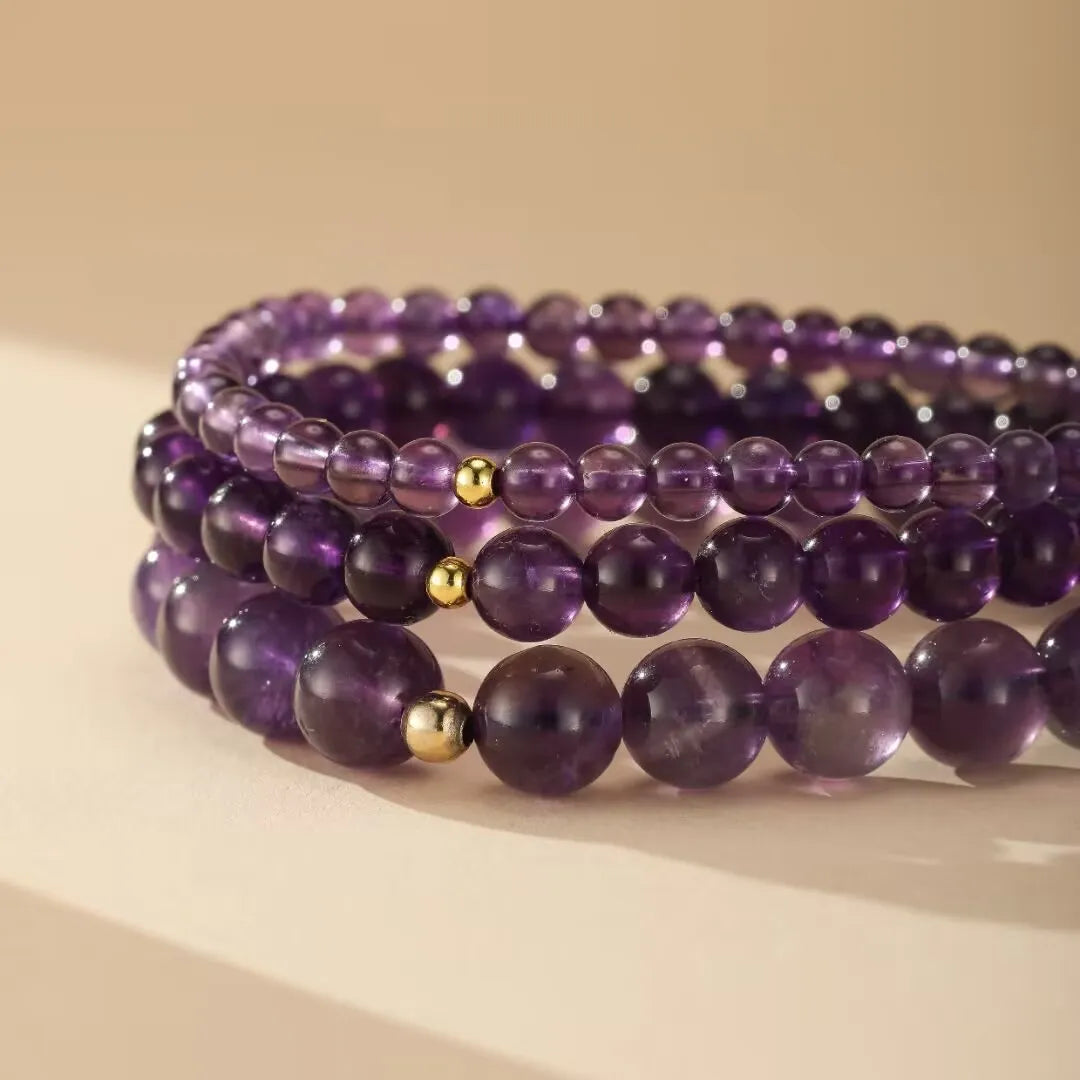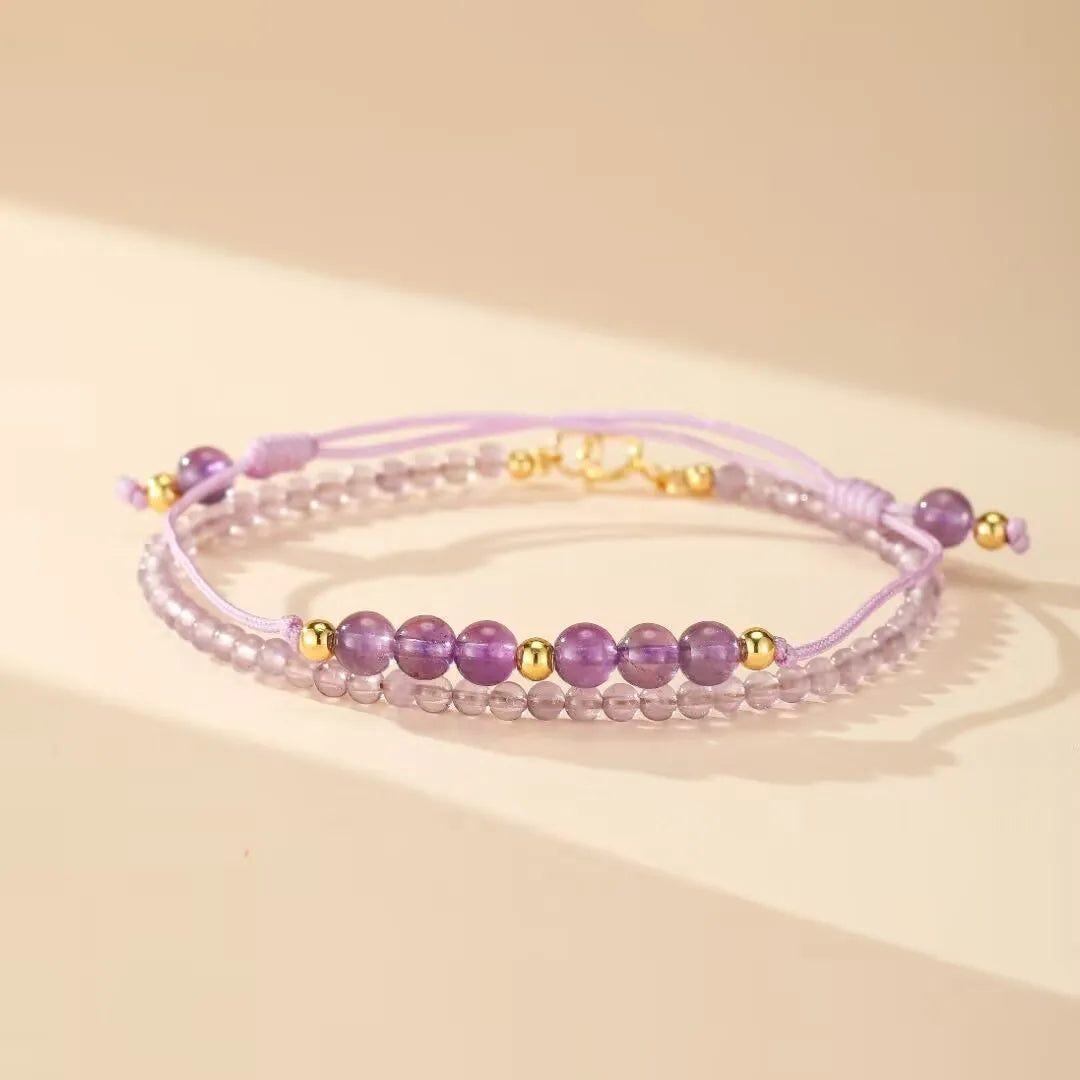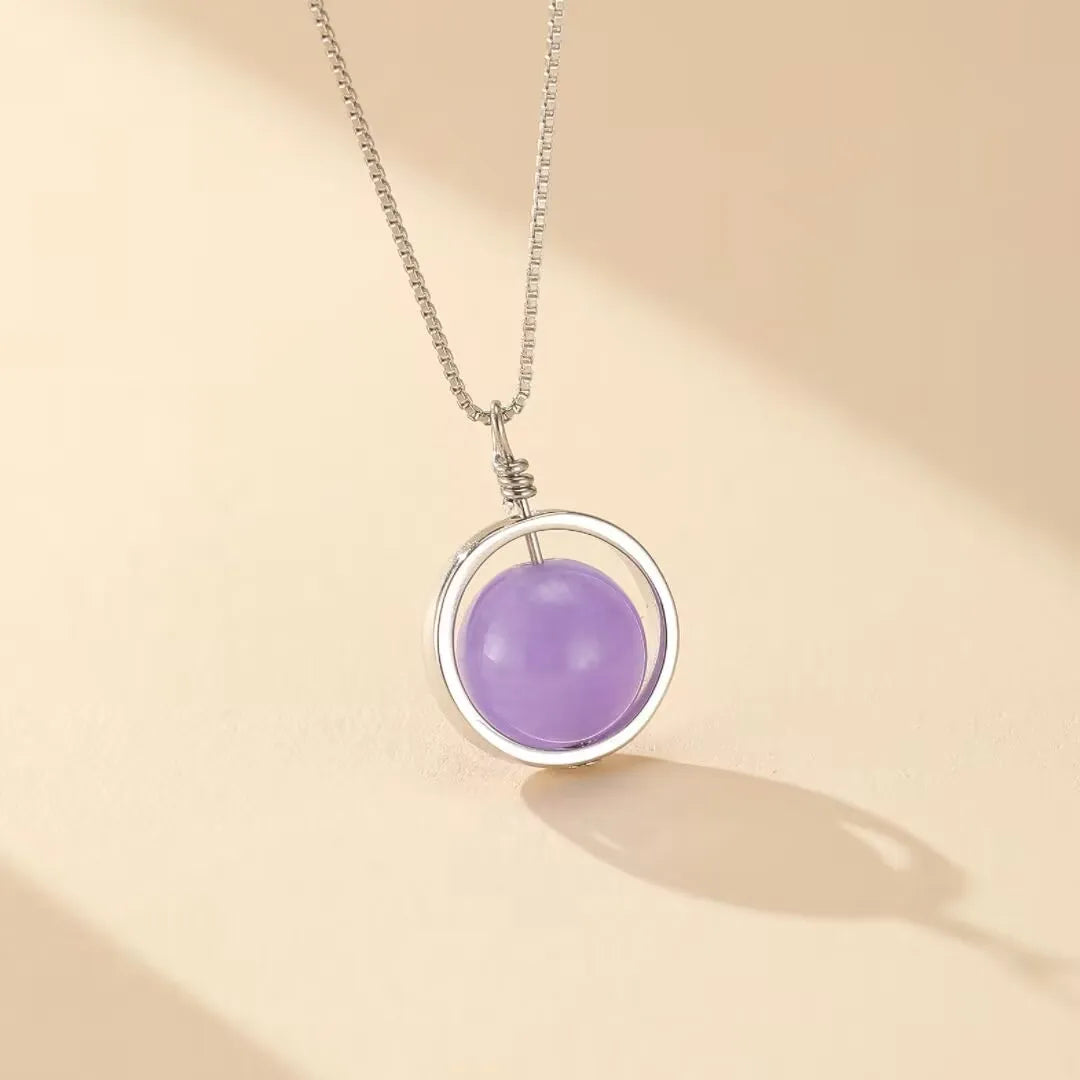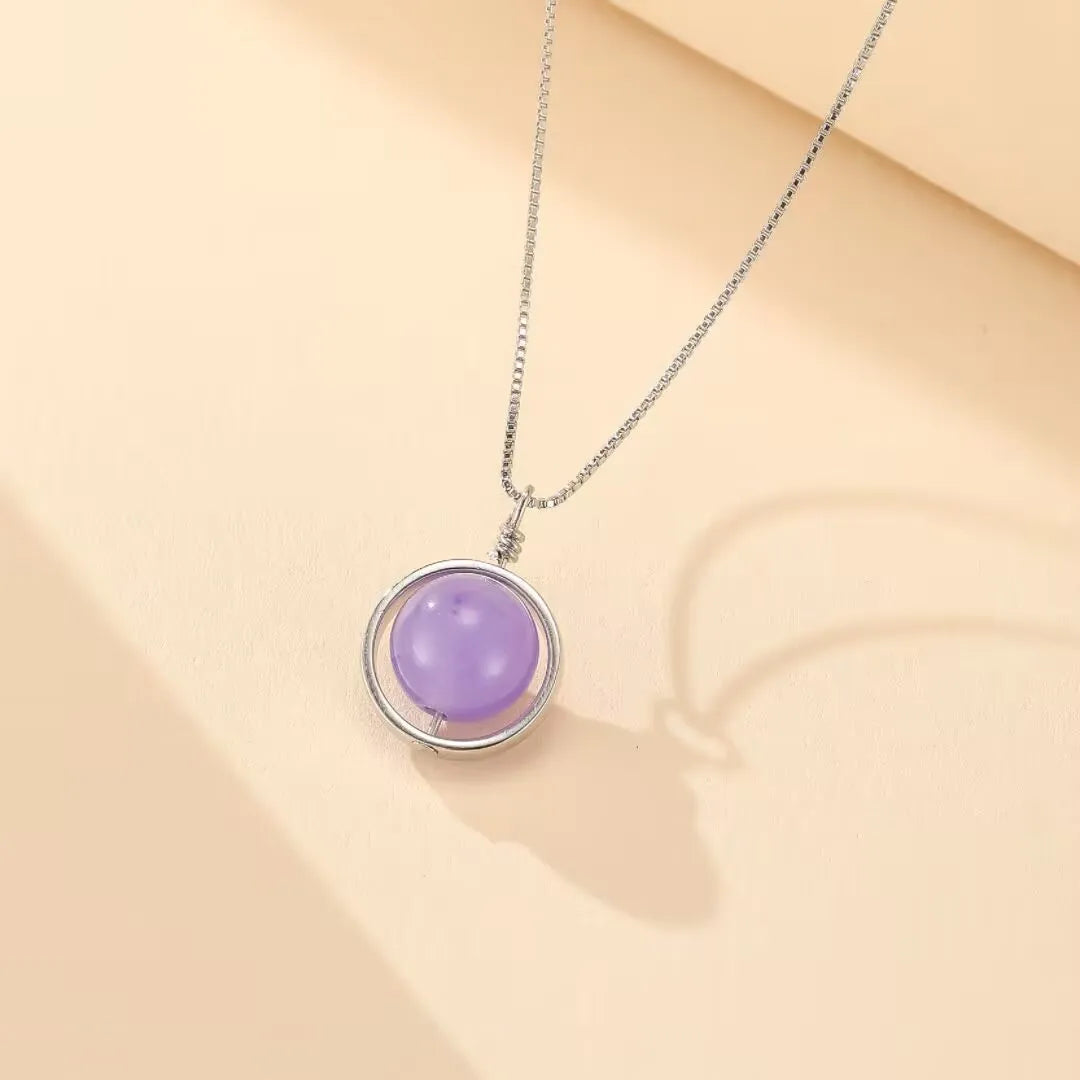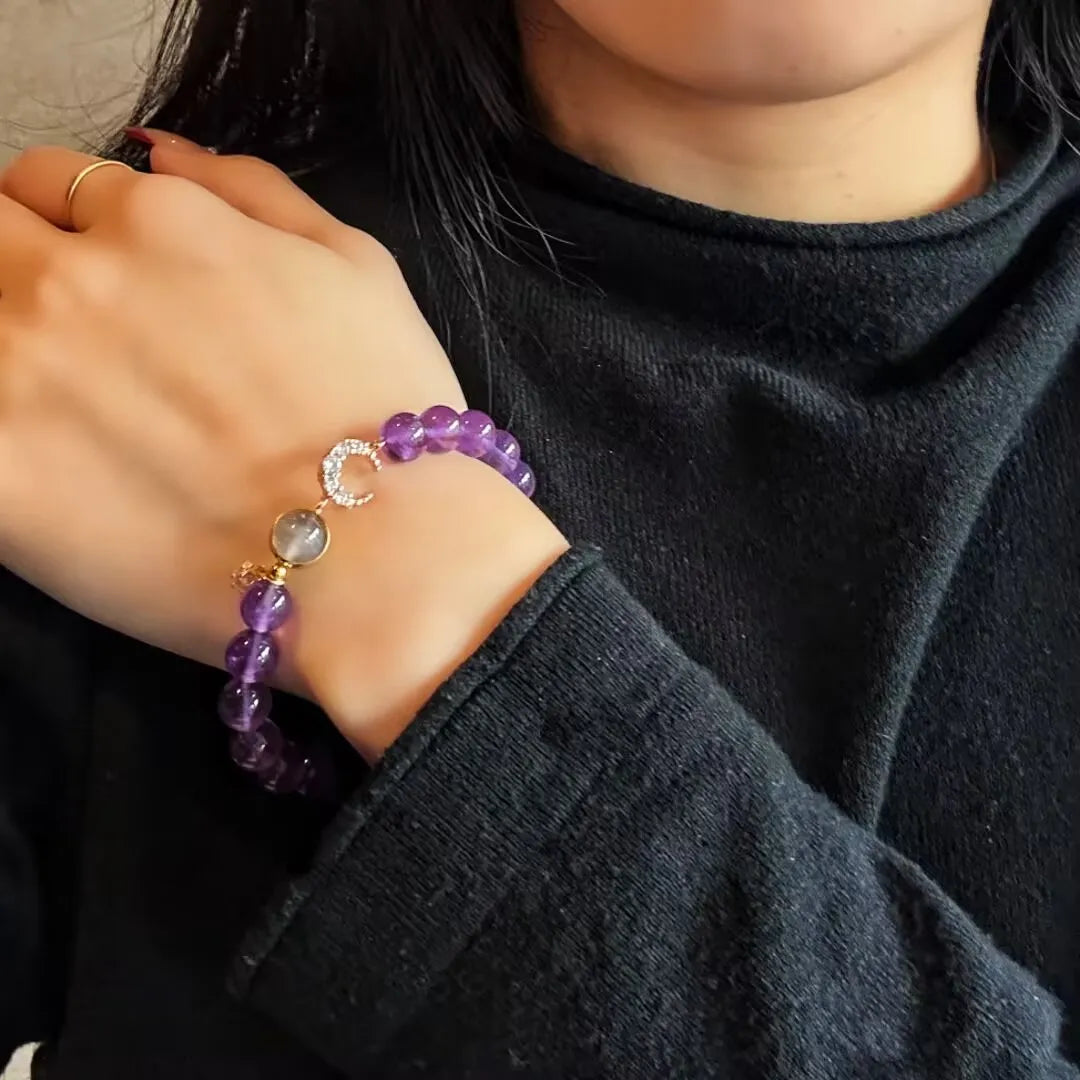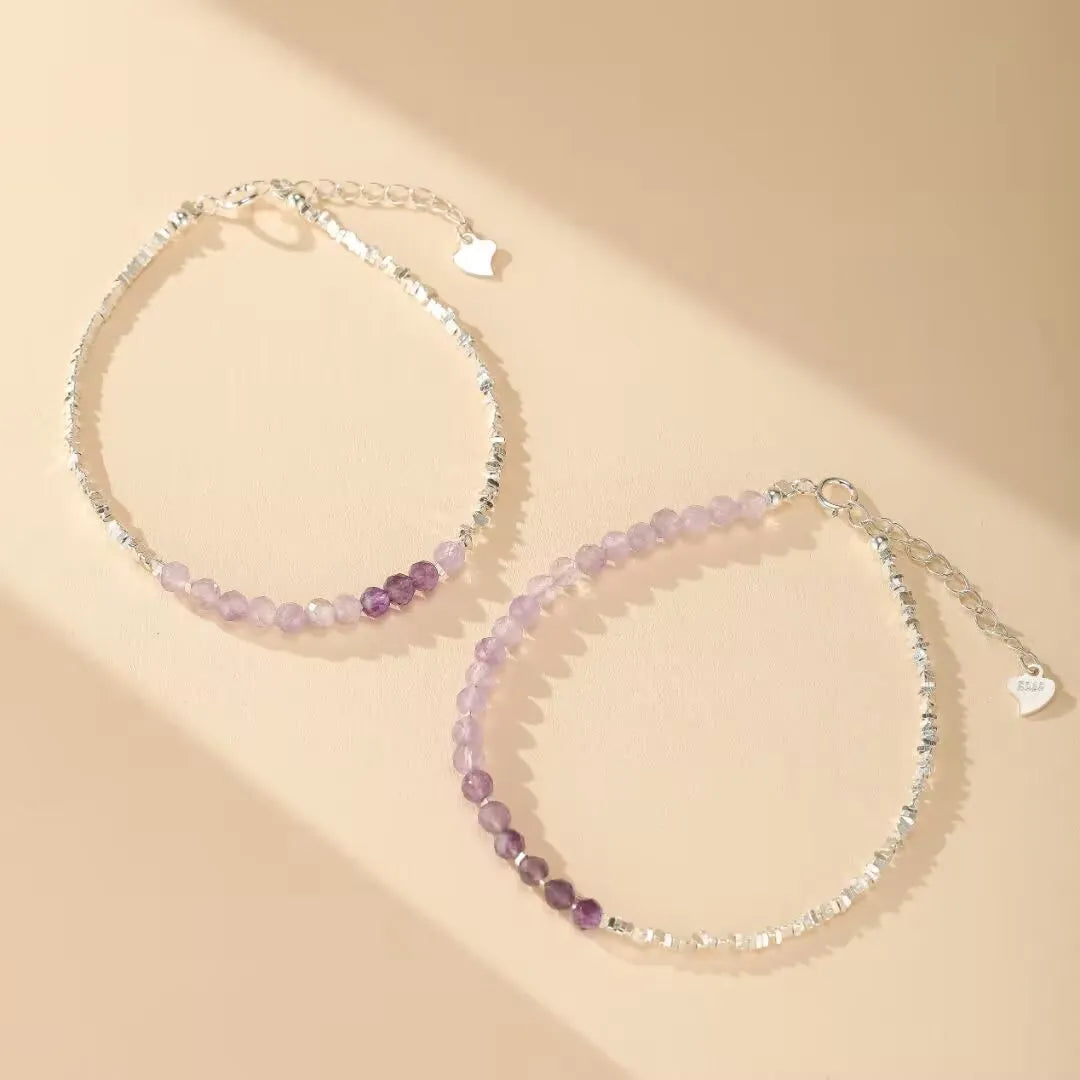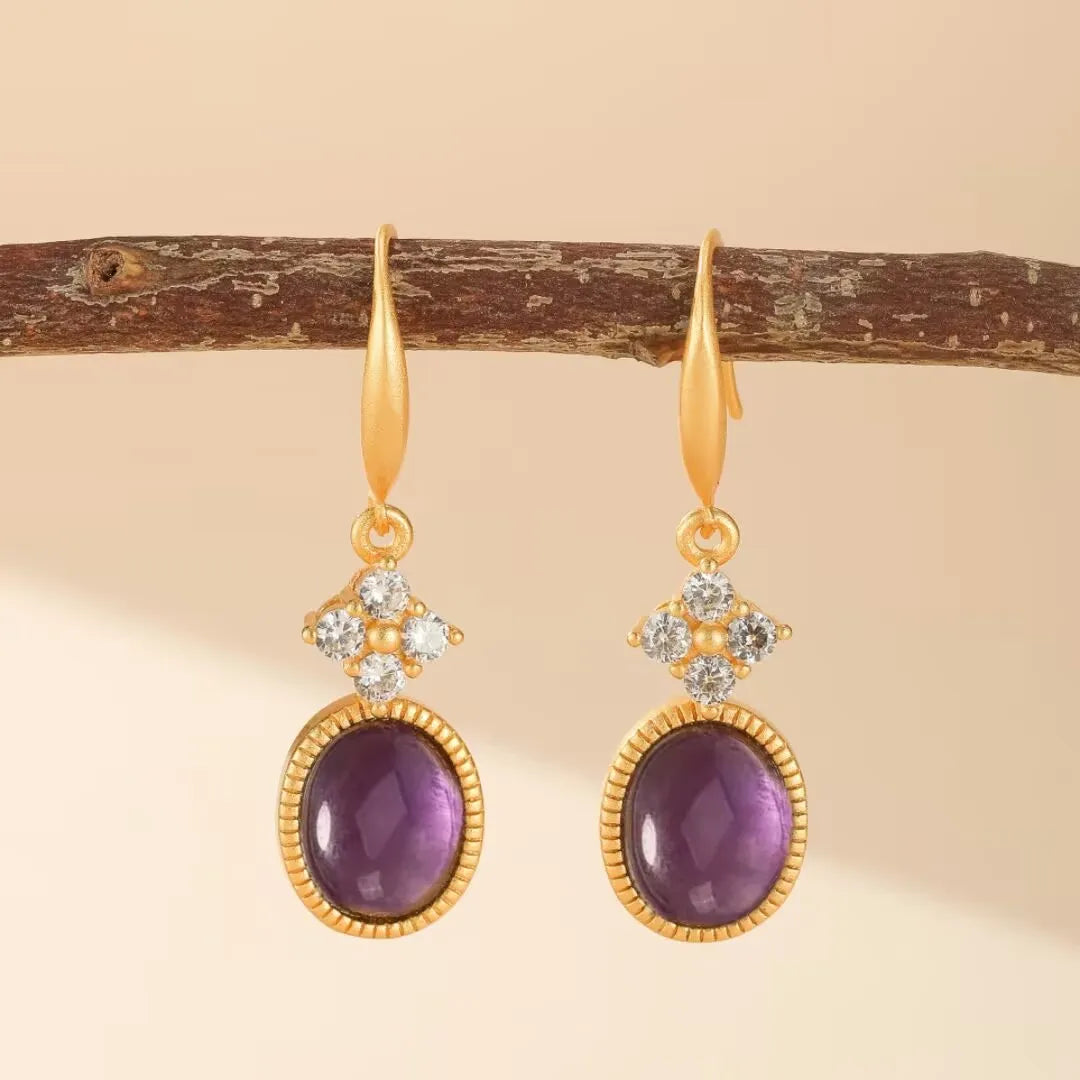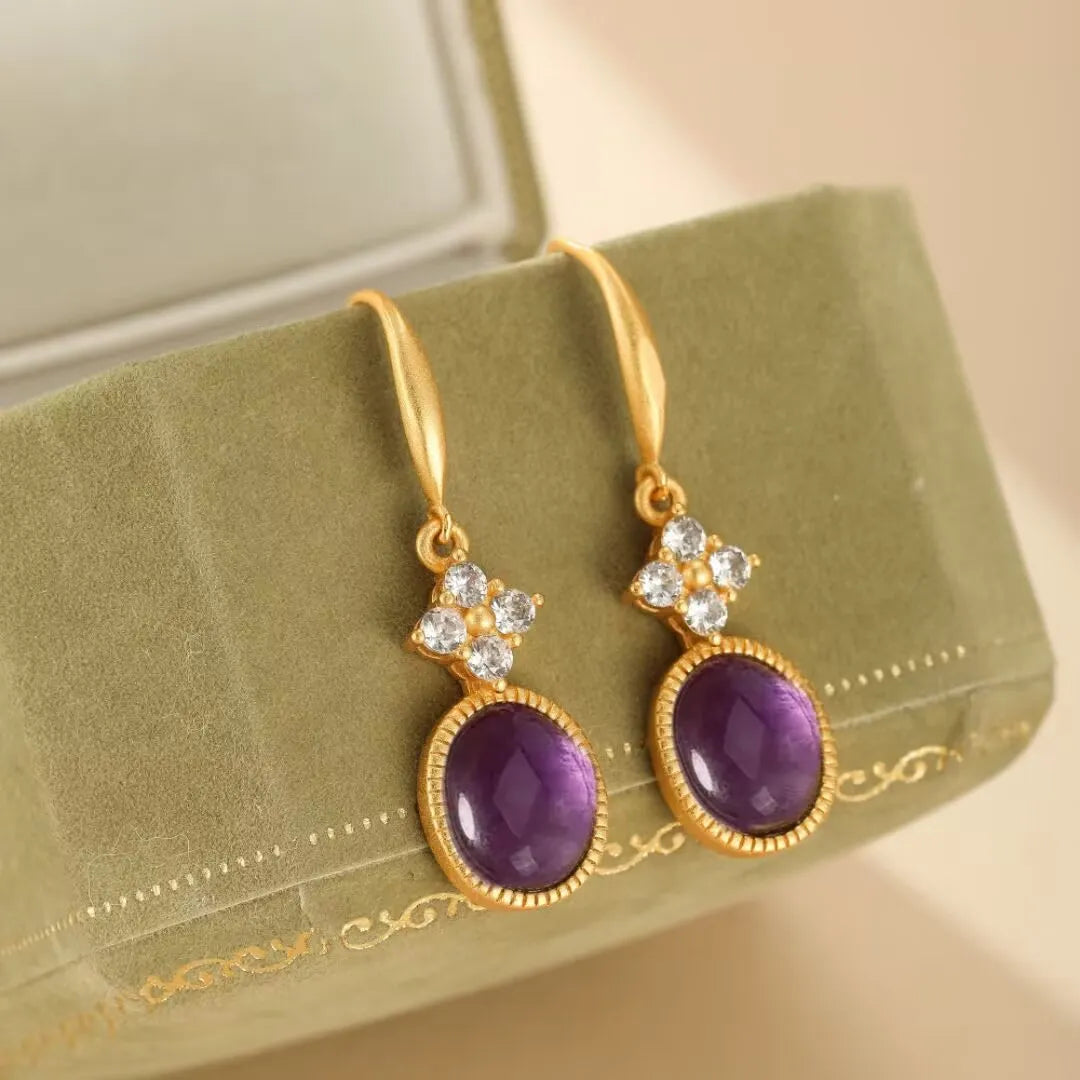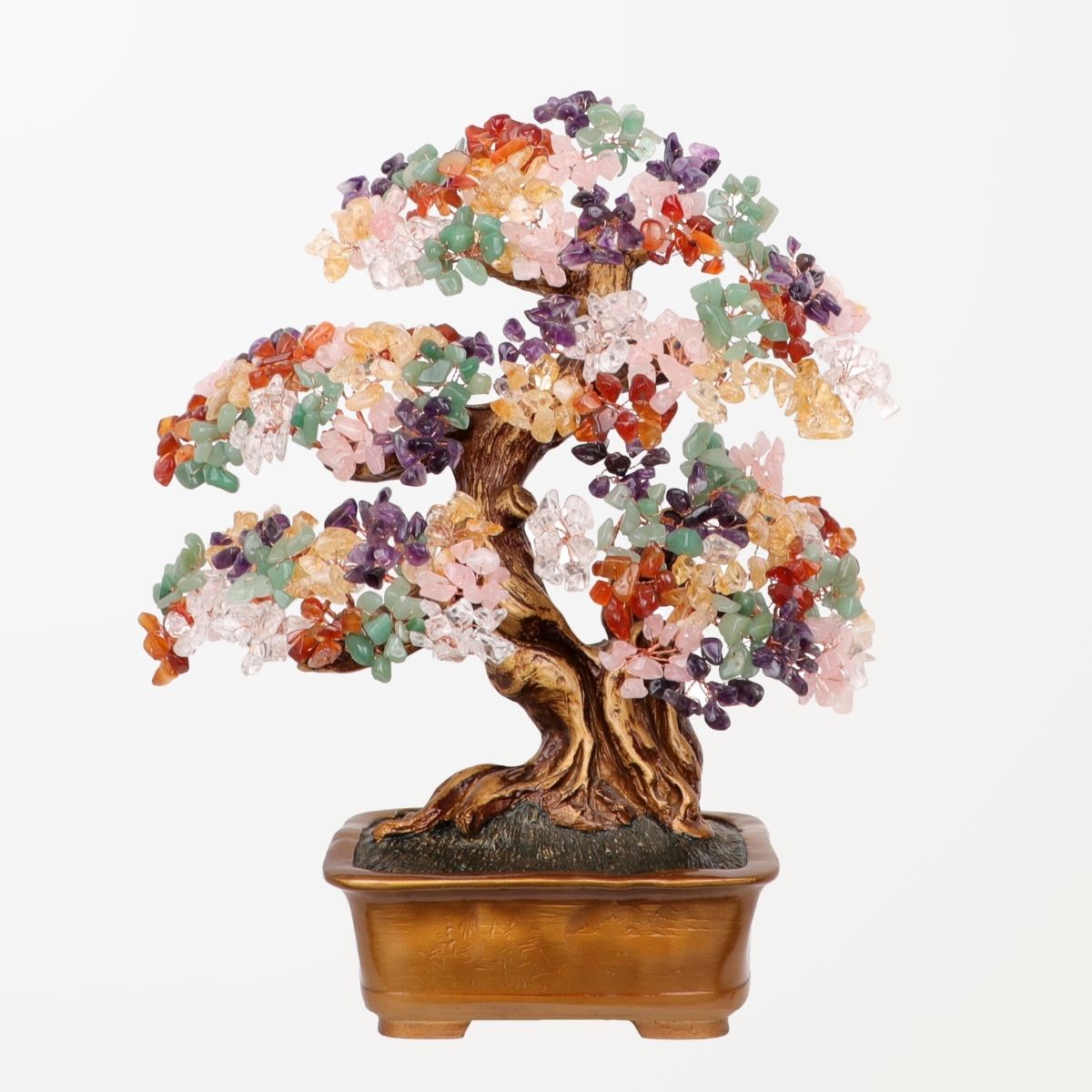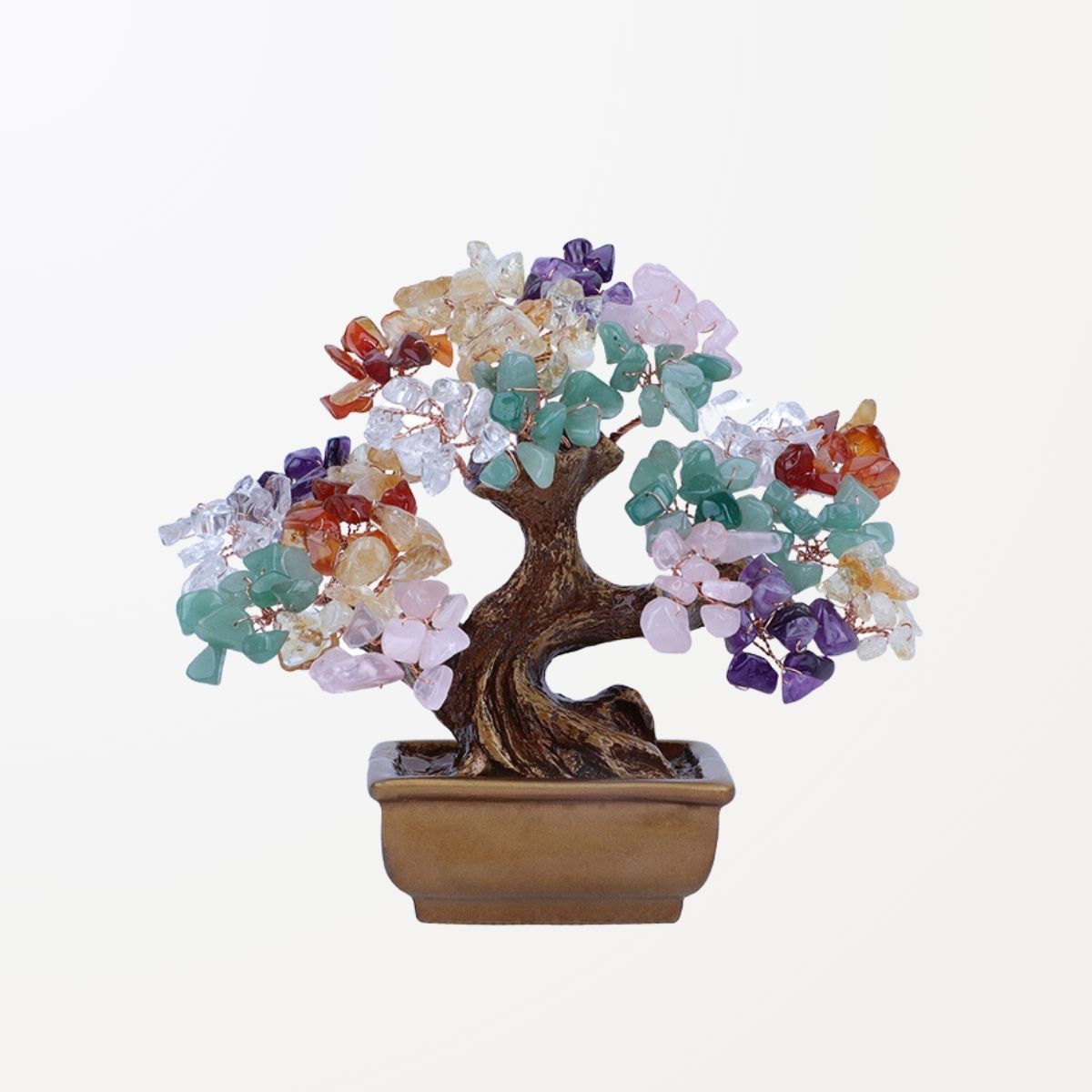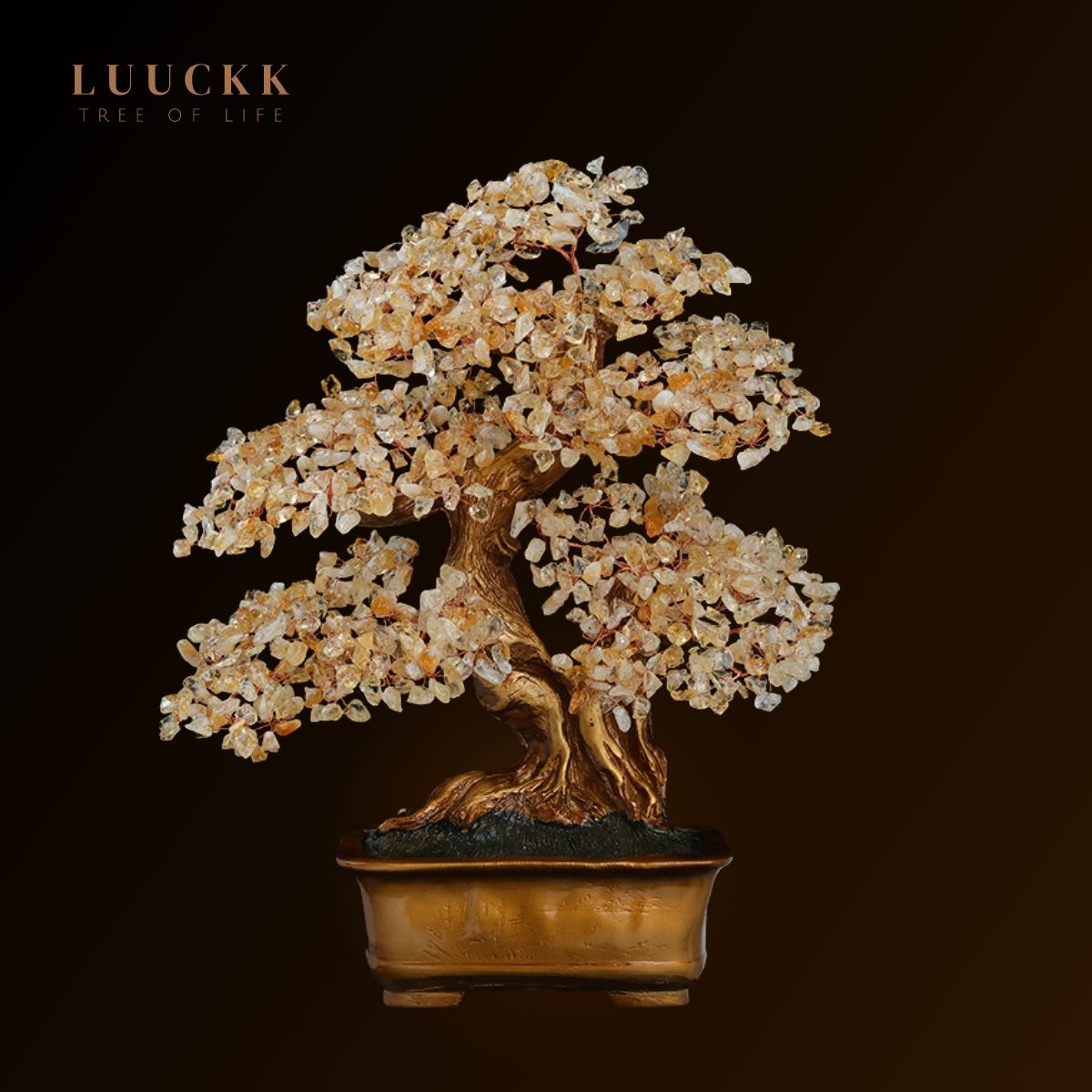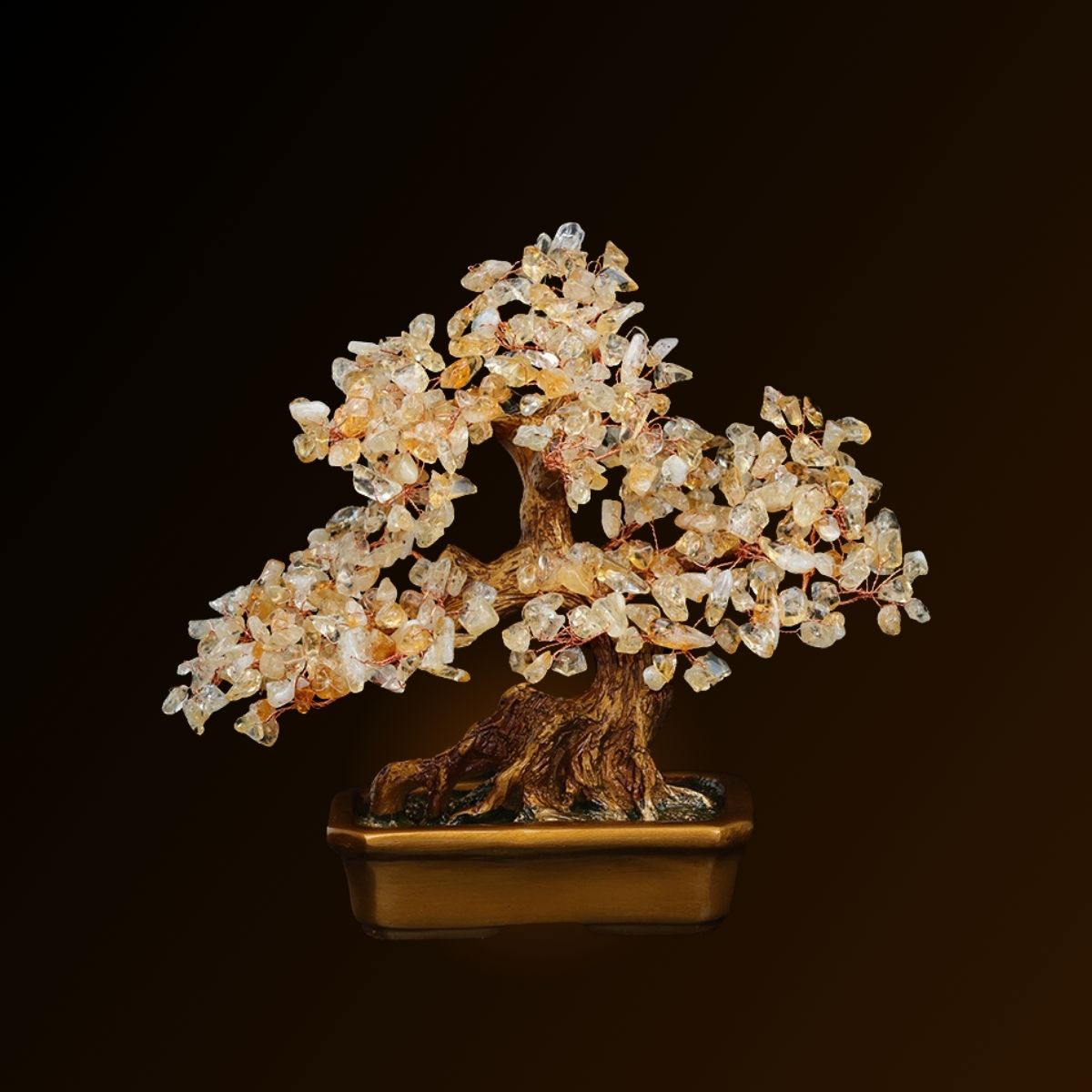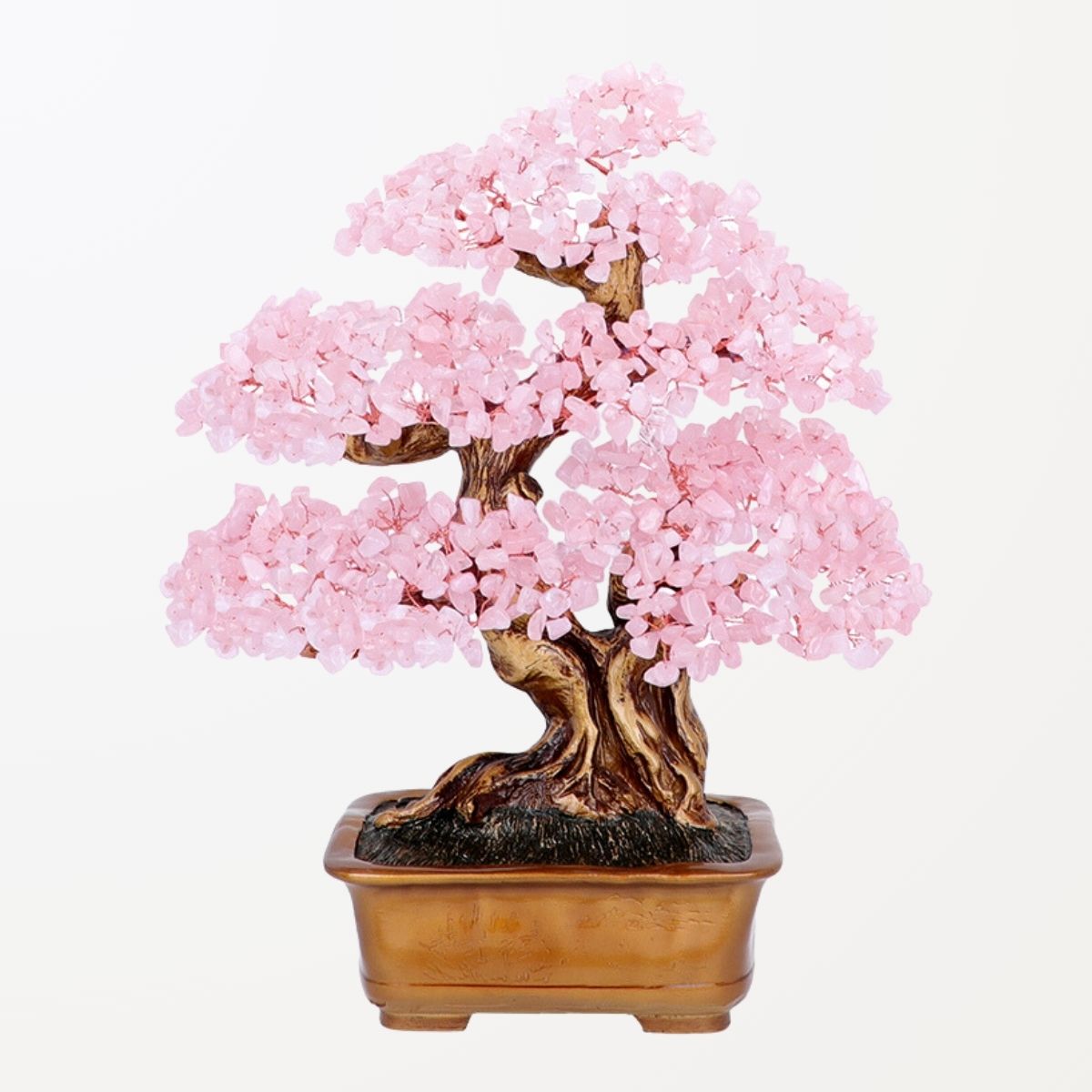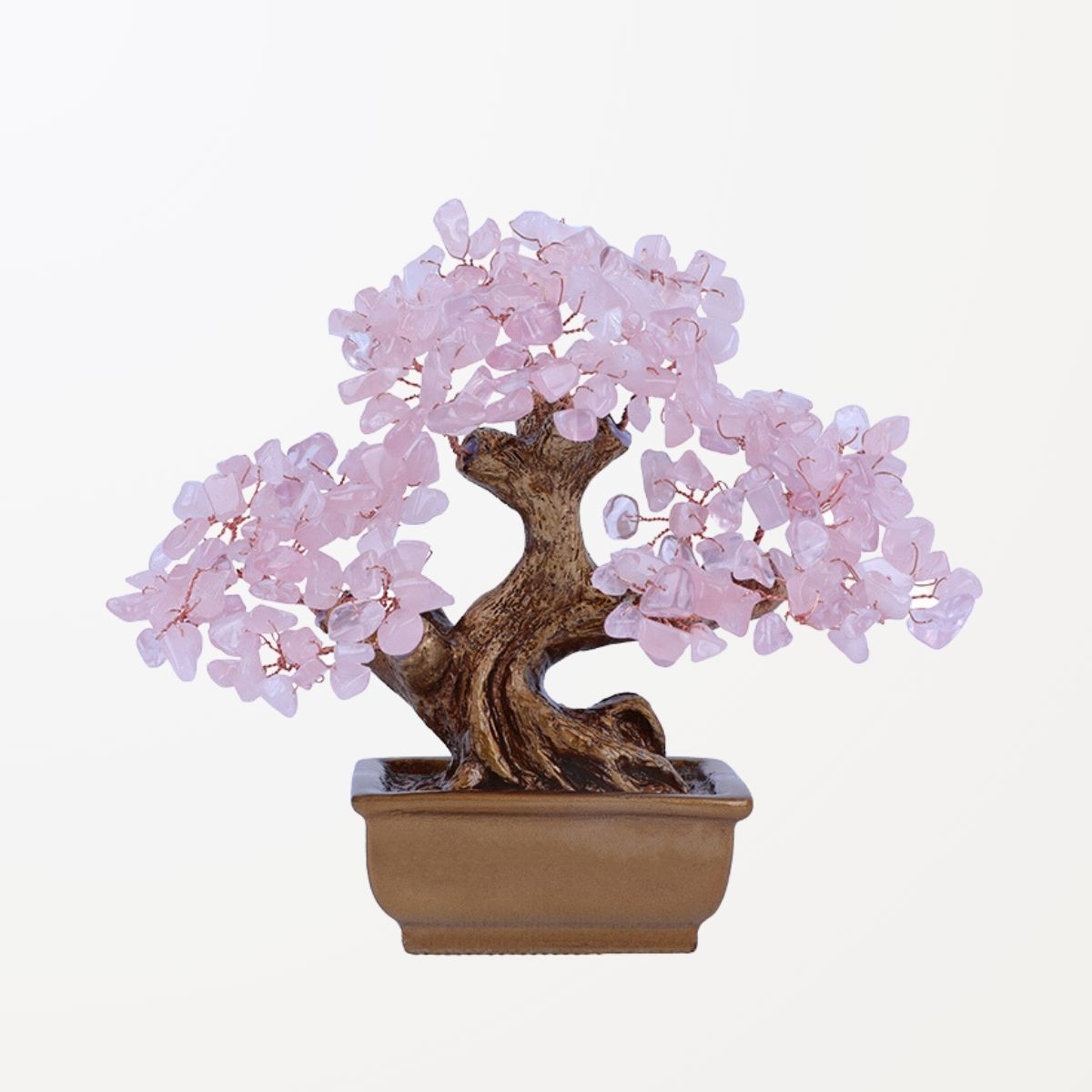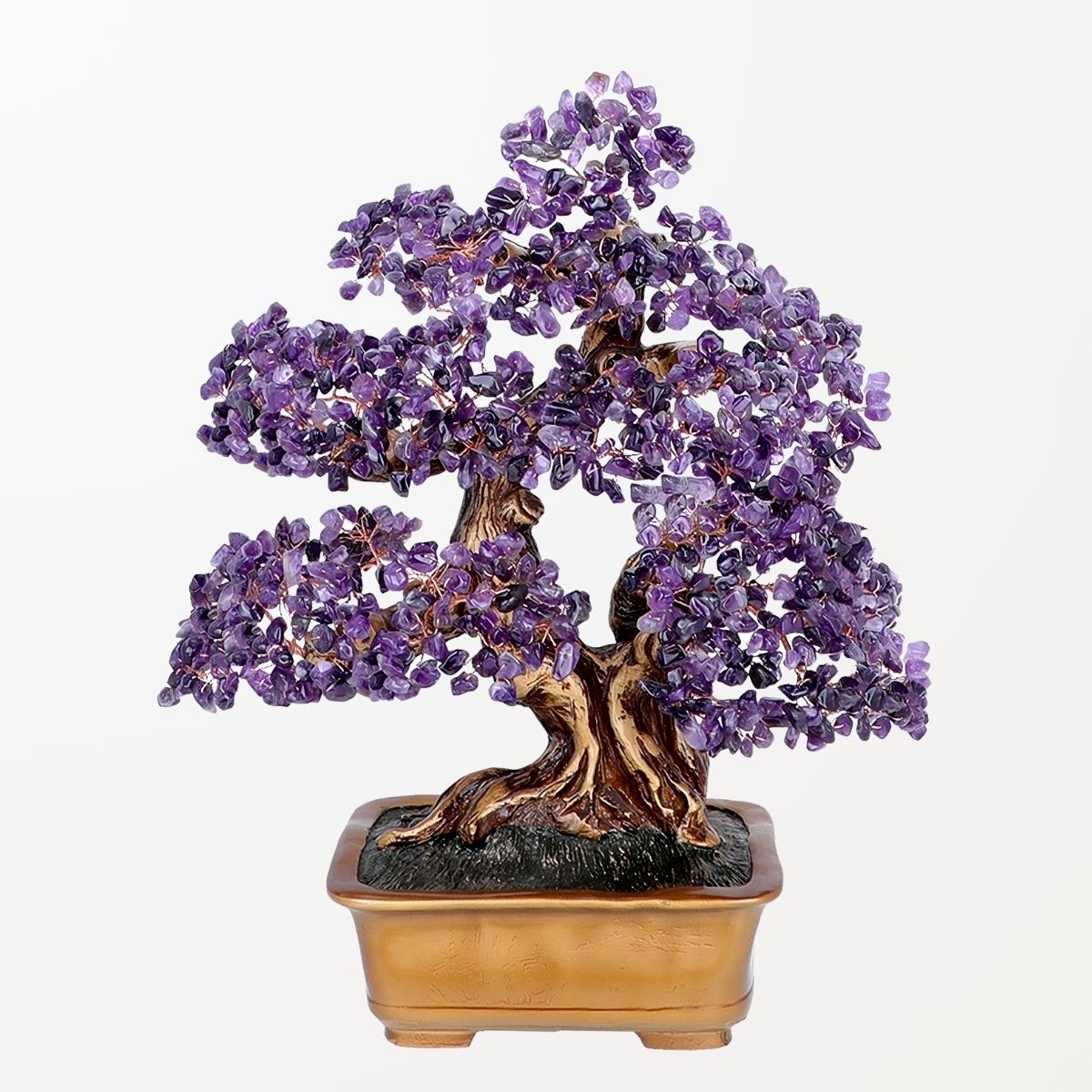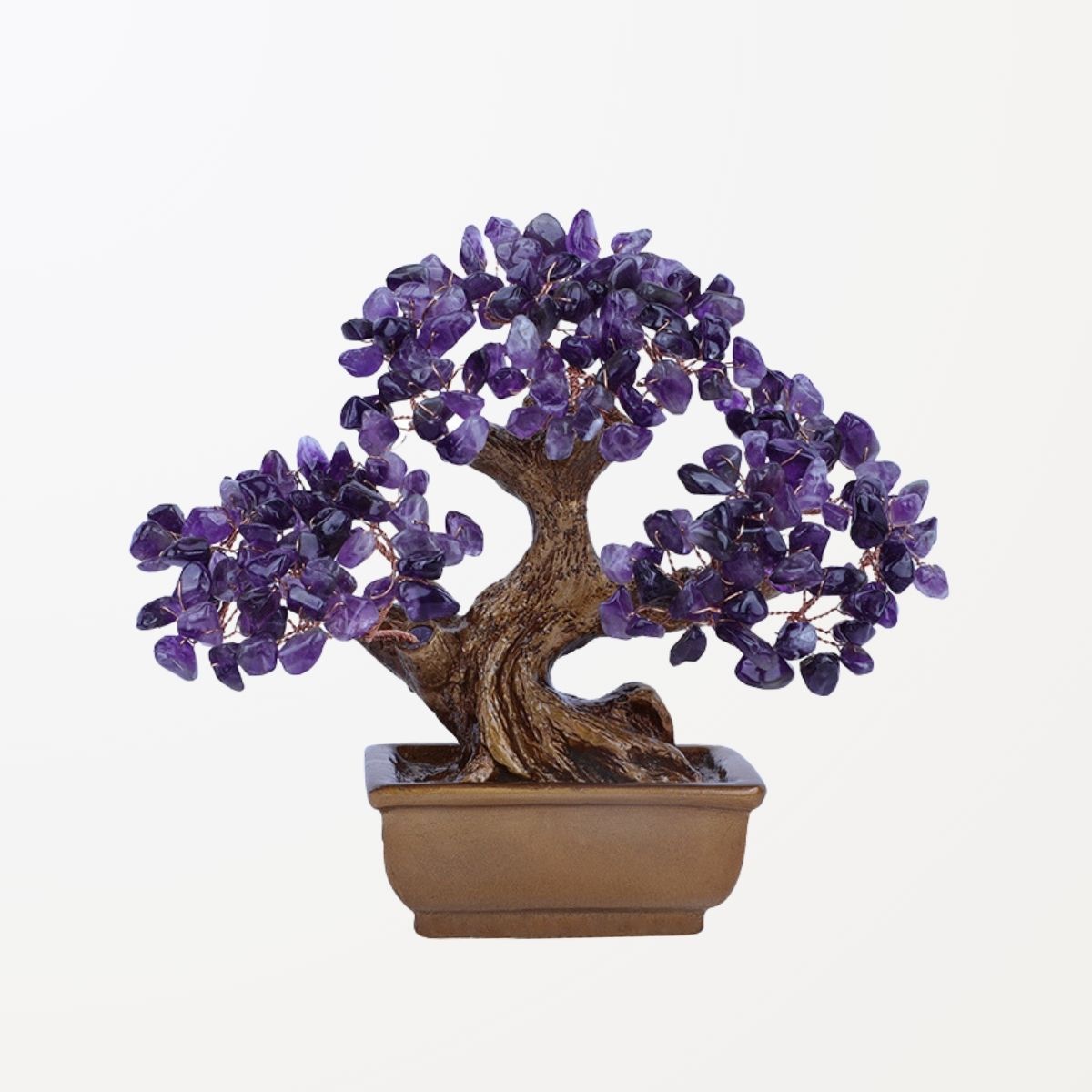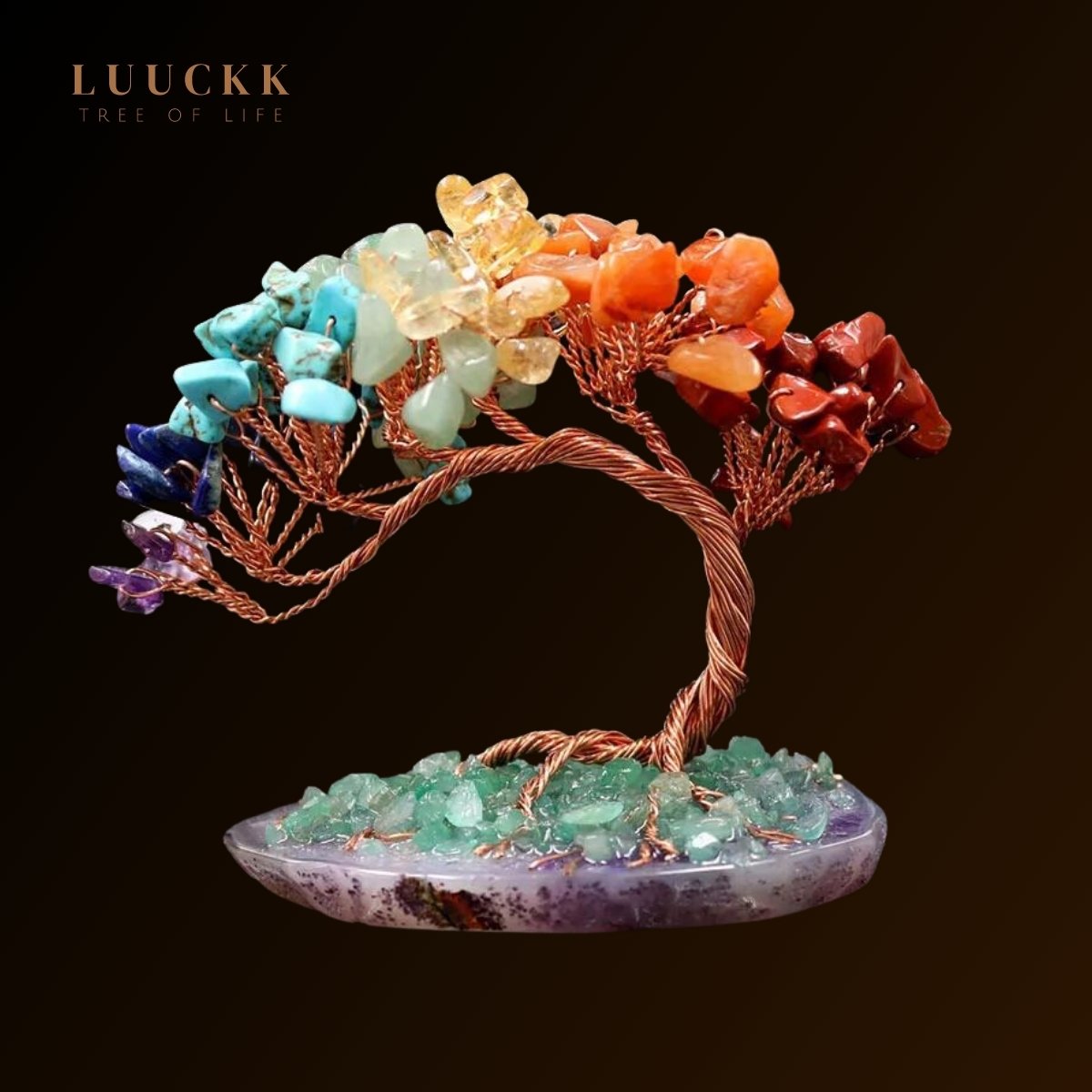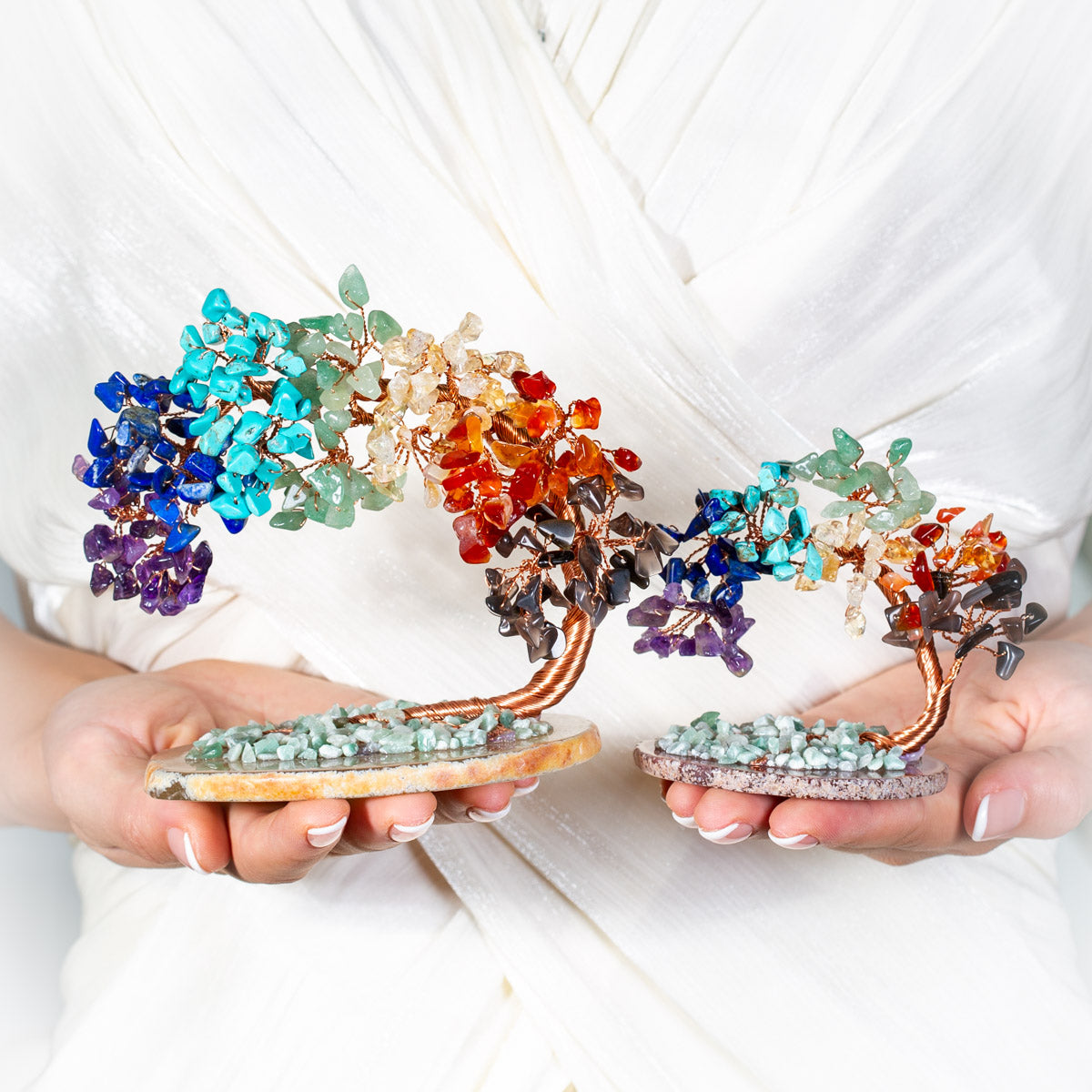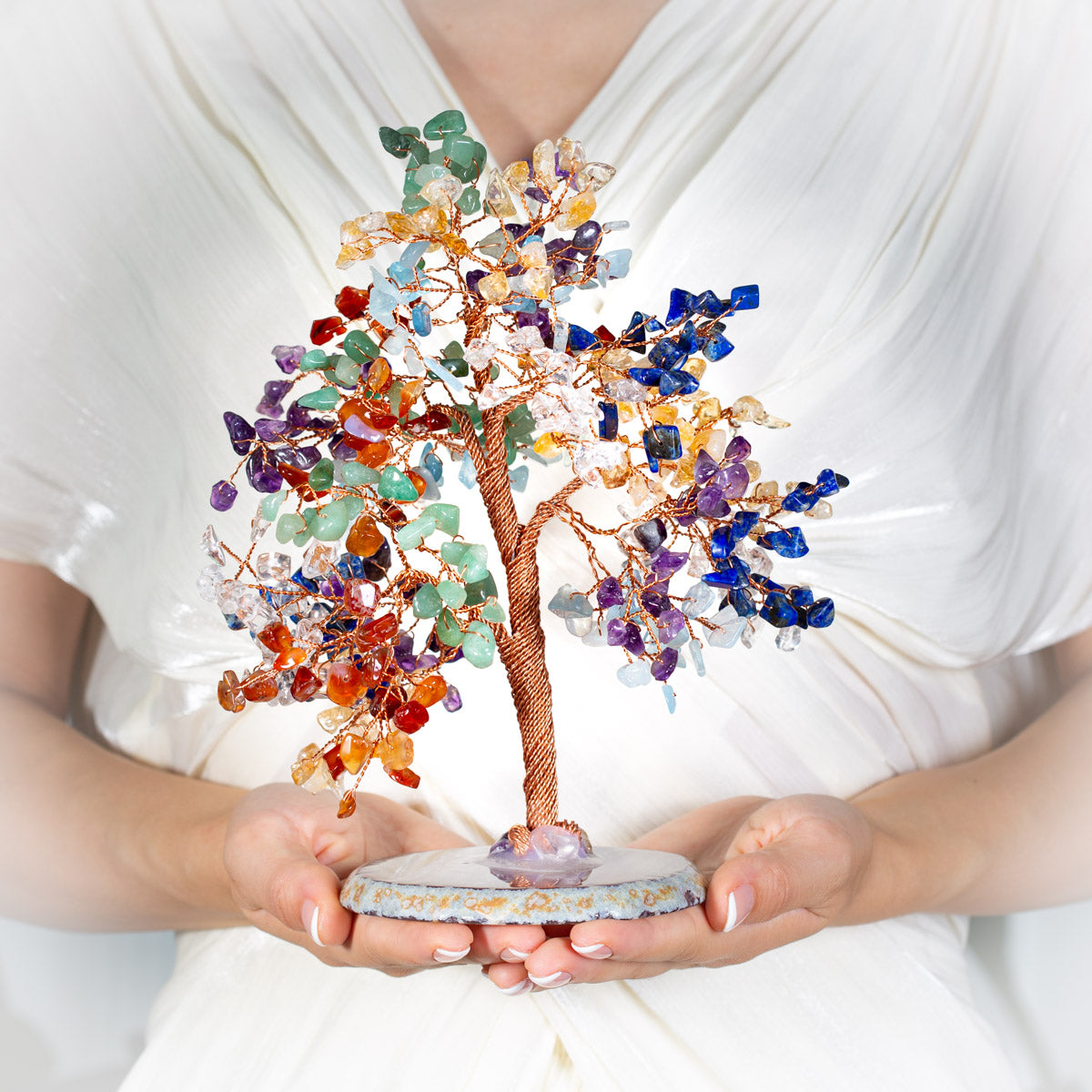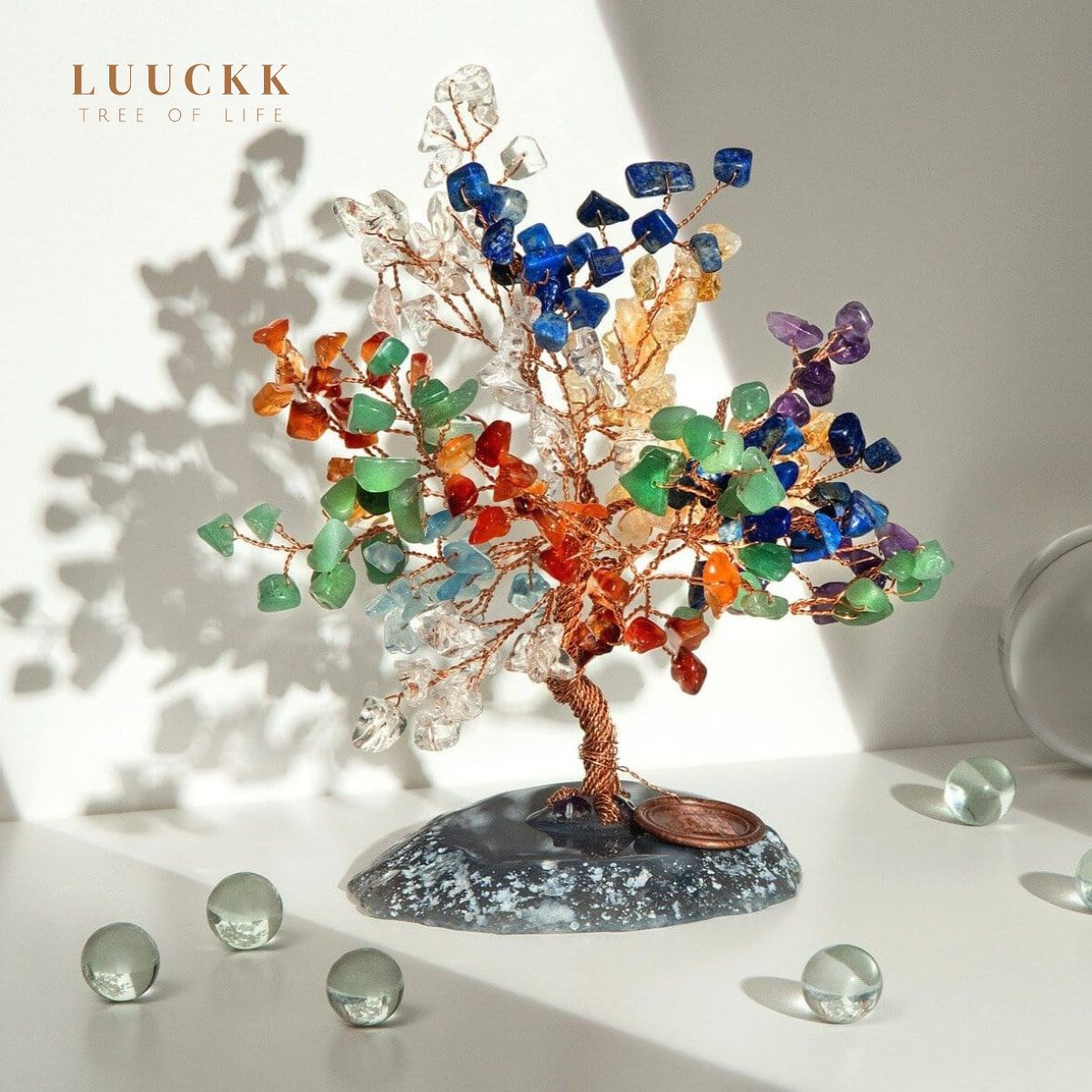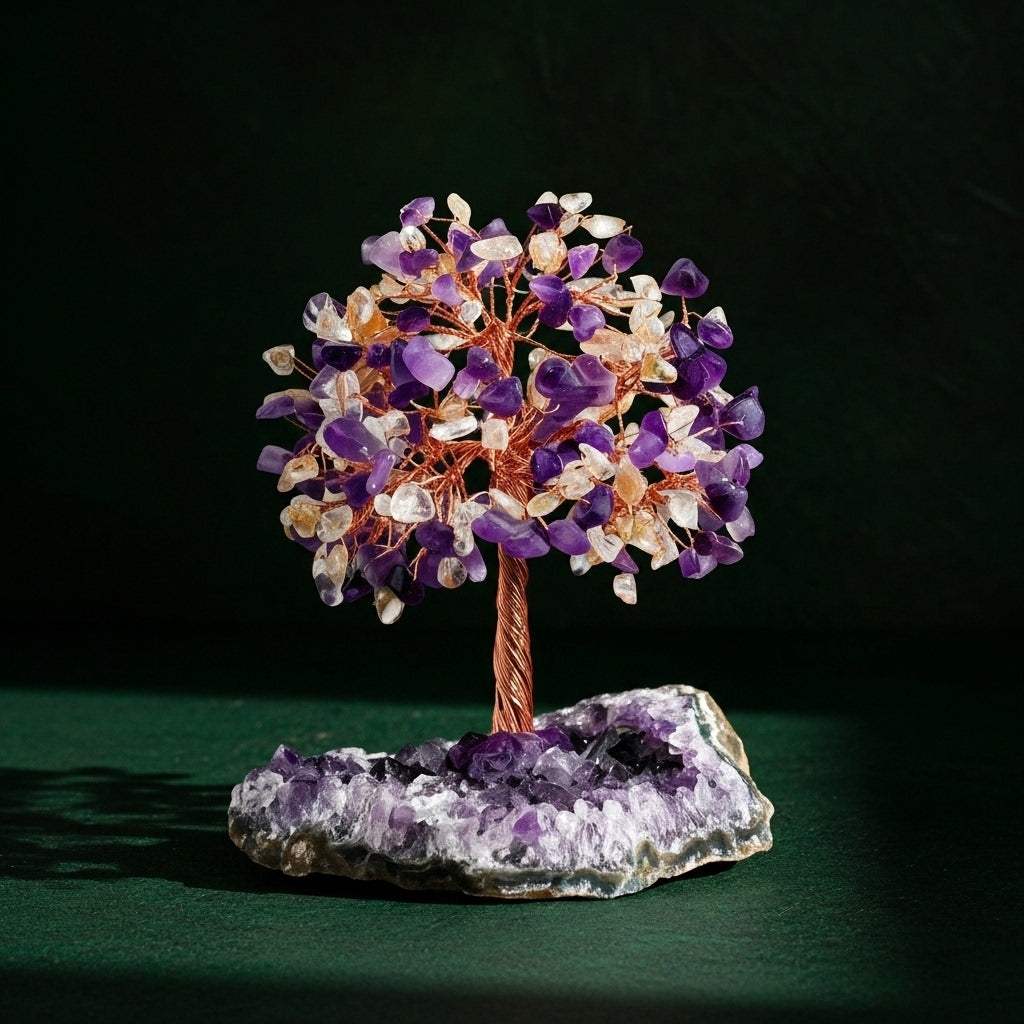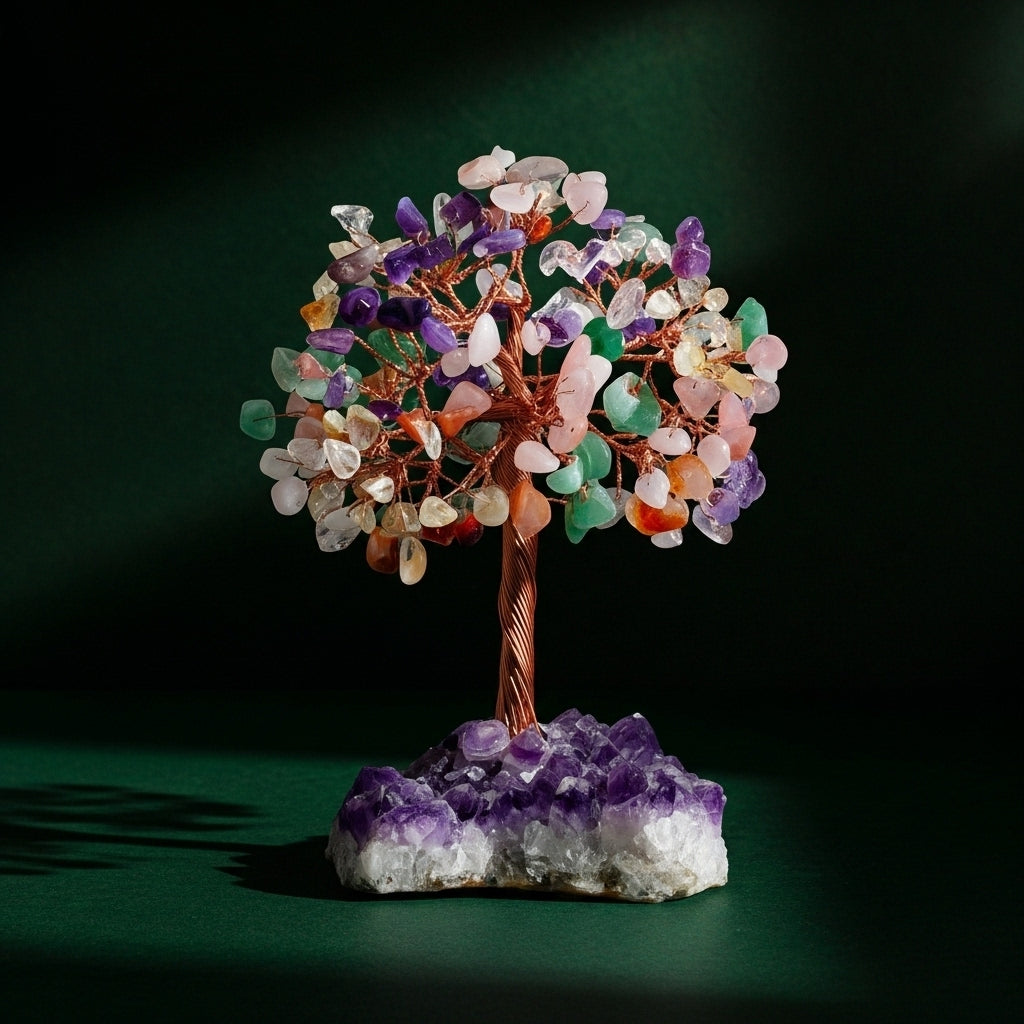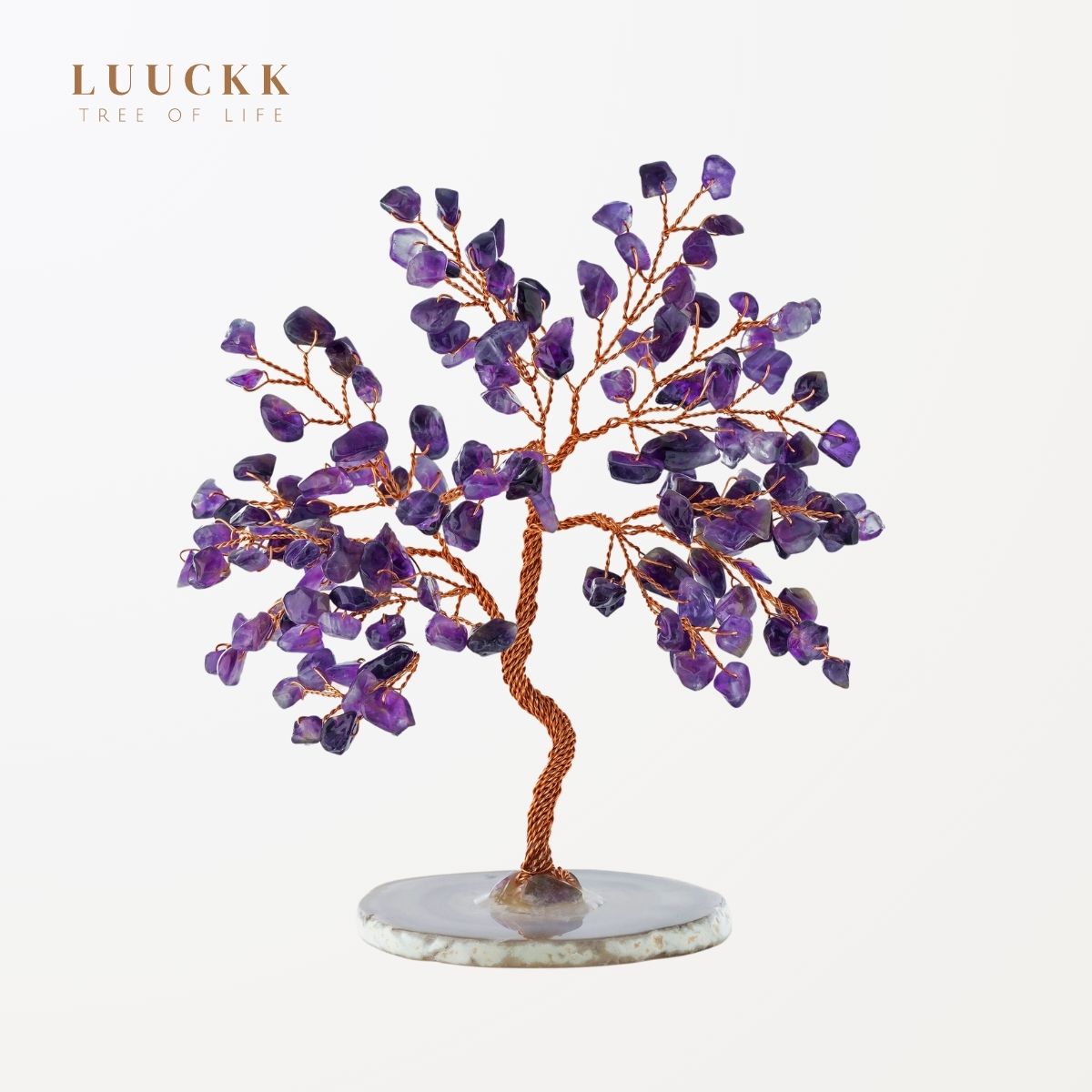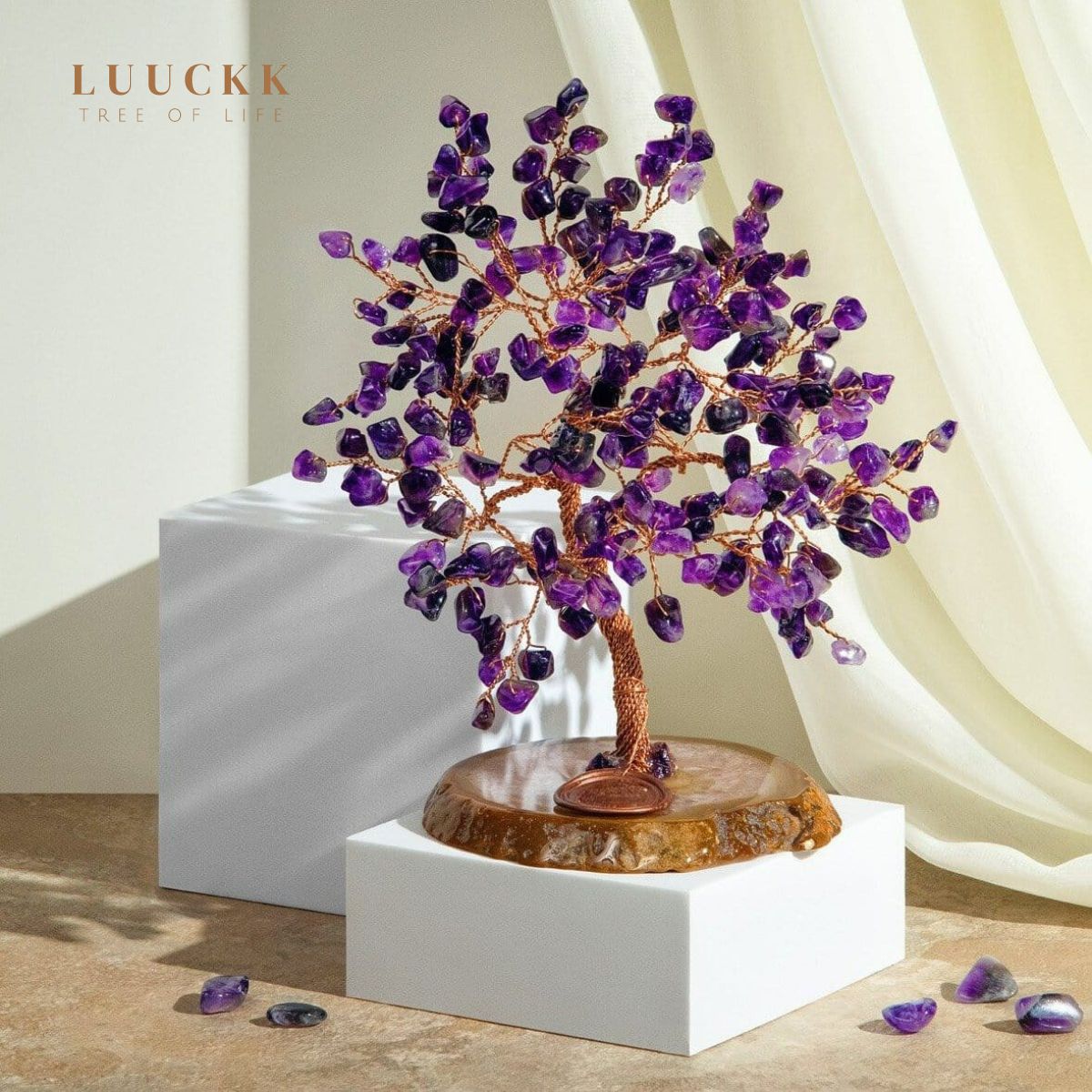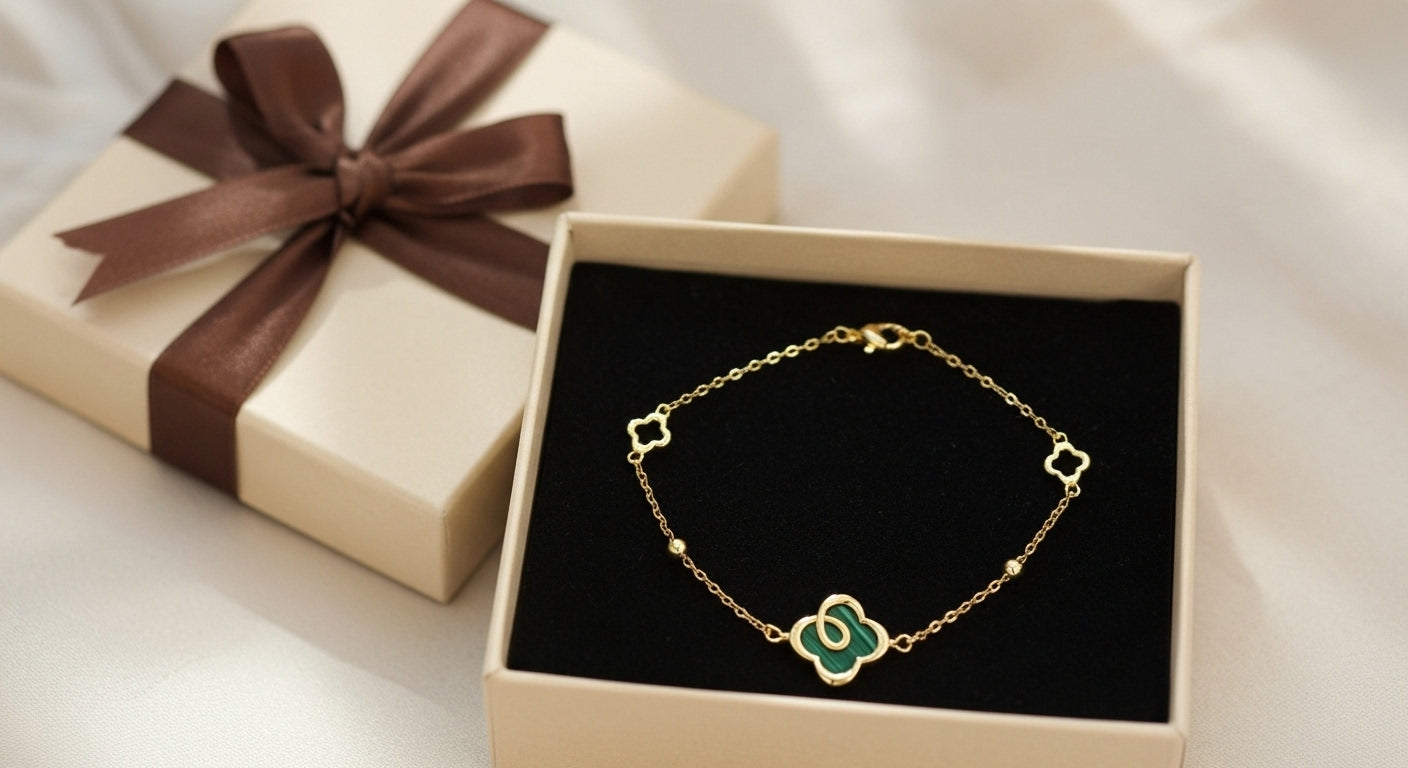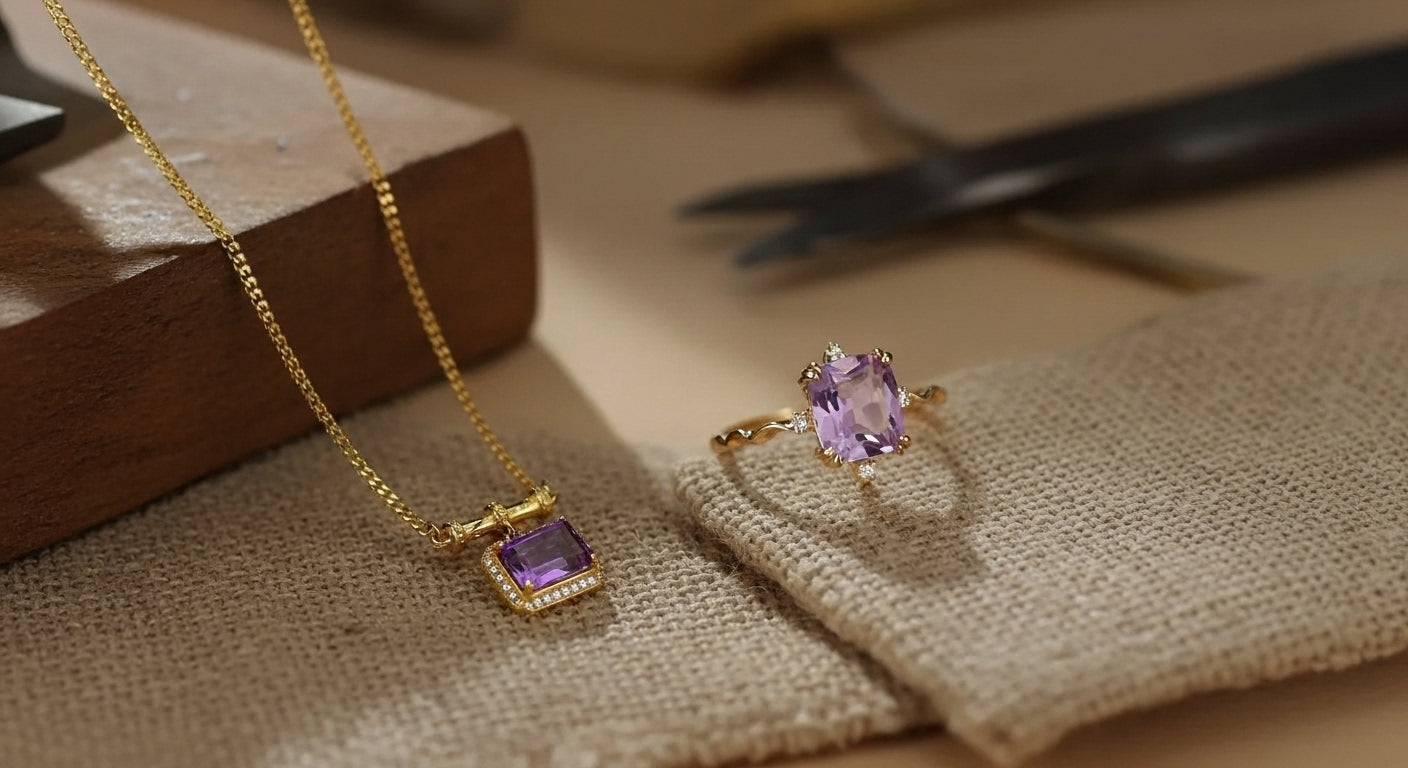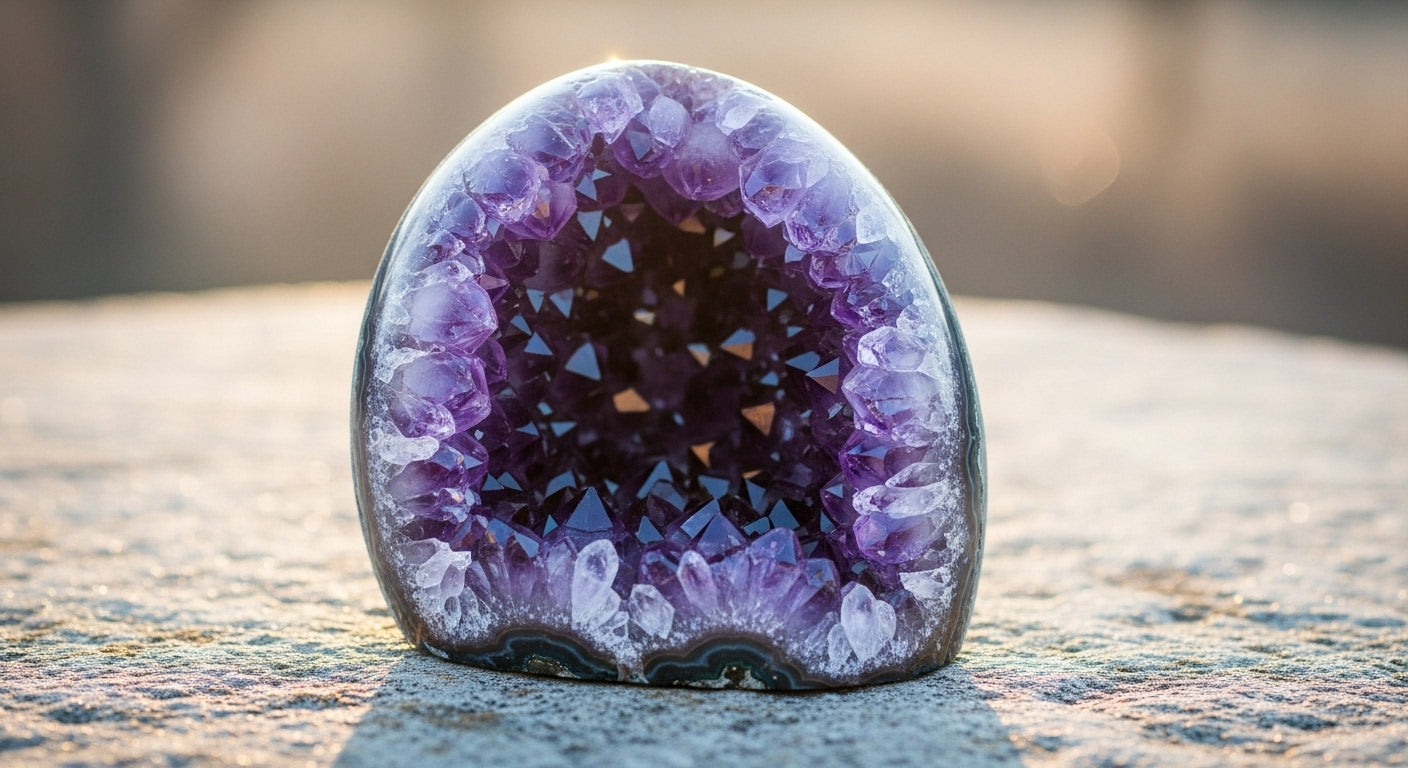
The Fascinating Origin of Amethyst: From Nature to Your Jewelry
Amethyst, a jewel with purple and mystical reflections, has fascinated lovers of gemstones and spiritual objects for centuries. From its stunning geological origins to its role in lithotherapy, this timeless stone embodies both elegance and serenity. Featured in sumptuous jewelry or used as a meditation tool, amethyst captivates with its beauty and its many benefits. This article invites you on a captivating journey through the history, transformation, and care of this exceptional stone while exploring its unique energetic properties.
A Stone with Mystical and Historical Roots
The Etymology of the Word "Amethyst"
The term "amethyst" comes from the ancient Greek word "améthystos," which can be translated as "not intoxicated." In antiquity, this name reflected a popular belief: amethyst was thought to prevent intoxication and bring unwavering clarity of mind. The Greeks, convinced of its powers, engraved the stone in symbolic shapes and wore it as a talisman. It was also found set in wine cups to neutralize the effects of excess alcohol during banquets.
For the Romans, amethyst symbolized elegance and spiritual protection. Roman nobles incorporated it into elaborate jewelry such as rings and necklaces, showcasing their refinement and pursuit of wisdom. This protective and mystical role ensured its place as an essential stone in ancient societies.
Amethyst’s Role in History
Throughout the ages, amethyst has held a unique place in the beliefs and practices of civilizations. In ancient Egypt, it was reserved for elites and often found in the tombs of pharaohs to ensure protection in the afterlife. The Egyptians believed this stone preserved the soul and facilitated the transition to the afterlife.
During the Middle Ages, amethyst gained religious significance. Catholic bishops wore rings adorned with this stone as a symbol of chastity, humility, and spirituality. Its violet colors, associated with royalty and devotion, made amethyst a favored gem for rituals and religious ornaments.
In Asia, particularly in India and China, amethyst was revered as a spiritual stone. It was used to calm the mind and balance energies, making it a valuable ally in meditation and philosophical practices. Buddhists, in particular, appreciated this stone for its properties of harmony and spiritual awakening.

A Royal Gemstone
Until the late 18th century, amethyst rivaled the most precious stones like diamonds, rubies, and emeralds. It adorned crowns, scepters, and other royal insignia, embodying power and wisdom. In European courts, its intense violet hue was associated with nobility and divinity, qualities deemed essential for monarchs.
Queen Charlotte of England, known for her love of gemstones, owned a collection of amethysts that she wore during official events. Catherine the Great of Russia, on the other hand, valued this stone not only for its beauty but also for its soothing and protective properties. She incorporated it into tiaras, necklaces, and even interior decorations.
Even after being classified as a semi-precious stone following the discovery of vast deposits in Brazil, amethyst retains its prestige. Its rich history and powerful symbolism continue to captivate both jewelry enthusiasts and spirituality practitioners.
The Natural Origin of Amethyst: From Earth to Jewelry
How Does Amethyst Form in Nature?
Amethyst is a geological marvel that originates in volcanic geodes, those hollow rock cavities hidden beneath the Earth's surface. These formations occur when lava, rich in silicon dioxide, cools slowly. Under specific conditions of pressure, heat, and sometimes interaction with mineral-rich waters, silicon begins to crystallize, forming the hexagonal structures characteristic of quartz.
What makes amethyst unique is the presence of traces of iron in its composition. These elements interact with the Earth's natural radiation, generating the violet hues that characterize this stone. These color variations depend on the concentration of iron and the local environmental conditions. The crystallization process is incredibly slow, often taking millions of years for the geodes to be entirely lined with these sparkling crystals.
Some geodes can reach impressive sizes, containing breathtakingly beautiful amethysts, often displayed in museum exhibits or used in high-end jewelry.
The World's Main Deposits
Amethyst is mined in several regions of the world, but some deposits stand out for their exceptional quality and distinctive features.
-
Brazil: The world's leading producer of amethysts offers stones in a variety of shades, from light violet to soft lilac. The deposits in the state of Rio Grande do Sul, in particular, are renowned for producing crystals with perfectly symmetrical structures.
-
Uruguay: This country produces amethysts with deep, rich tones, almost saturated. Uruguayan stones are distinguished by their intensity and remarkable brilliance. Although Uruguay's geodes are often smaller, they are prized for their superior quality.
-
Zambia: Zambian deposits offer stones of exceptional transparency and often violet hues tinged with blue. These amethysts are considered among the most precious for their purity and chromatic intensity, making Zambia a key player in the global gemstone market.
-
Other Notable Regions: Canada, Madagascar, and the United States (notably Arizona) also have amethyst deposits, though their production is more limited.
The Quality Criteria of Amethyst
To assess the value of an amethyst, three main criteria are considered:
-
Color:
Hue is the most determining factor. The most prized amethysts exhibit a deep, uniform, and well-saturated color. "Royal violet" is particularly sought after, while stones with lighter tones or discolored areas are considered lower quality. Color variations between violet and blue or red highlights add visual richness. -
Clarity:
A high-quality amethyst is transparent and free of inclusions visible to the naked eye. Although inclusions are natural, they can reduce the stone's brilliance and value. Perfectly clear gems are often reserved for fine jewelry. -
Cut:
The way an amethyst is cut can greatly influence its brilliance and sparkle. A masterful cut maximizes the light reflection within the stone, showcasing its unique violet shades. Popular cuts include brilliant, emerald, and pear shapes, often used for elegant jewelry.
These characteristics, combined with geographic origin and the rarity of the stones, influence their market value. Although more accessible than other precious stones, amethyst retains a special place thanks to its natural elegance and unique properties.
Amethyst in Lithotherapy and Spirituality
Properties and Benefits of Amethyst
Amethyst is a cornerstone in lithotherapy, renowned for its many virtues. It is known as a soothing and protective stone, often used to balance emotions and reduce stress. By neutralizing nervous tensions, it helps create a state of mental and physical serenity, ideal during periods of intense activity or emotional upheaval.
In addition to its calming effect, amethyst acts as a true energetic shield. It repels negative energies that could disrupt our balance, creating a protective aura around its wearer. This stone is also reputed to stimulate intuition and inspiration, making it valuable for artists, writers, and creators in search of new ideas. Furthermore, its influence on mental clarity promotes enlightened and strategic decision-making, making it a precious ally in complex professional or personal contexts.
See also our article: How to Choose Natural Stones for a Tree of Life?
Why Is Amethyst a Meditation Stone?
In lithotherapy, amethyst is closely associated with the crown chakra, located at the top of the head. This chakra is linked to spirituality, universal connection, and the awakening of higher consciousness. By harmonizing this energy point, amethyst helps strengthen the bond between the human mind and cosmic energy.
In meditative practices, this stone is prized for its ability to calm the mind and promote deep concentration. Placed on the crown chakra or nearby during a meditation session, it helps eliminate intrusive thoughts, enabling a state of relaxation and profound introspection. This state not only fosters mental rest but also opens pathways to higher spiritual dimensions.
Many practitioners also integrate amethyst into their sacred spaces, placing it on altars or meditation mats. Some claim it amplifies the positive vibrations of the environment and intensifies spiritual experiences, creating an atmosphere conducive to inner balance and peace.
Beliefs and Legends Surrounding Amethyst
Amethyst is surrounded by captivating myths and legends that reinforce its place in collective imagination as a magical and spiritual stone. One of the most famous stories comes from Greek mythology. Dionysus, the god of wine and intoxication, was once angered by a mortal maiden named Amethyst. To protect her, the goddess Artemis transformed her into a pure, colorless crystal. Overcome with remorse, Dionysus poured wine over the crystal, giving it its signature purple hue.
Beyond this legend, amethyst has been celebrated in other cultures for its spiritual qualities. In ancient India, it was believed to bring inner peace and promote harmony in interpersonal relationships. Among the Romans, it was worn as an amulet to ensure just and temperate conduct. During the Middle Ages, it was regarded as a sacred stone that protected warriors from harm and ensured victory in battles.
These stories, though varied, agree on one thing: amethyst symbolizes sobriety, wisdom, and protection. Even today, these mythical qualities continue to inspire those who choose it as a spiritual companion or as jewelry.

From Raw Stone to Radiant Jewelry: The Craftsmanship of Amethyst
The Steps in Amethyst Transformation
The journey of amethyst, from its raw extraction to its transformation into radiant jewelry, is a meticulous process that combines technical expertise and artistic creativity. Here are the main steps of this transformation:
-
Extraction:
Amethyst is extracted from deposits in the form of raw crystals, often housed in volcanic geodes. Miners use specific tools to preserve the crystals’ integrity, avoiding any damage that could diminish their value. -
Sorting and Selection:
Once extracted, the stones are sorted based on strict criteria such as color, clarity, and size. Stones with uniform color and deep tones are reserved for high-end pieces, while less regular stones may be used for rustic designs or decorative objects. -
Cutting:
Cutting is where the magic happens. Lapidaries, specialized craftsmen, sculpt the crystals with extreme precision to maximize their brilliance and color. Each cut is carefully planned to optimally reflect light, showcasing the characteristic violet hues of amethyst. Popular shapes include brilliant, emerald, and pear cuts. -
Polishing:
Once cut, the stone undergoes an intense polishing phase to achieve a smooth and shiny surface. This step reveals the amethyst’s natural beauty, emphasizing its transparency and brilliance. -
Setting:
Finally, jewelers incorporate amethyst into settings made of precious metals such as gold, silver, or platinum. Designs range from modern minimalist creations to refined vintage styles.
Amethyst Jewelry Styles
Amethyst is an incredibly versatile stone that adapts to a wide variety of jewelry styles, appealing to all tastes and occasions:
-
Rings:
Amethyst rings are highly sought after for their ability to add elegance and color. From minimalist designs with a single stone to more elaborate creations adorned with diamonds or other gemstones, amethyst remains a timeless choice. -
Necklaces:
Amethyst necklaces range from delicate pendants to bold statement pieces. An amethyst necklace instantly enhances an outfit, whether it’s a casual look or an evening gown. -
Bracelets and Earrings:
Amethyst bracelets, often paired with other stones, are perfect for a subtle and refined look. Earrings, on the other hand, offer a variety of styles, from discreet studs to elegant dangling designs, ideal for brightening the face.

Why Choose Amethyst Jewelry?
Amethyst jewelry is not only beautiful but also carries deep meaning and offers energetic benefits. Here are the main reasons:
-
Unique Aesthetic:
The violet color of amethyst, with shades ranging from soft lilac to deep purple, gives jewelry timeless elegance. It harmonizes with a wide range of styles and colors, making it a versatile choice for any outfit. -
Positive Energies:
According to lithotherapy enthusiasts, wearing amethyst jewelry helps maintain emotional balance, reduce stress, and promote concentration. It’s an ideal stone for those seeking beauty and well-being. -
Adaptability:
Amethyst jewelry suits both everyday wear and special occasions. It adds a touch of sophistication and spirituality to any look, making it a perfect gift or a signature piece in any jewelry collection.
Amethyst, combining natural beauty and powerful symbolism, remains an essential stone in the world of jewelry. Whether for its brilliance or its spiritual benefits, it continues to captivate those who wear it.
Caring for and Valuing Your Amethyst Jewelry
Tips for Cleaning and Maintaining Amethyst
Amethyst jewelry, like any precious piece, requires regular care to preserve its brilliance and beauty. Here are some detailed recommendations:
-
Avoid Harsh Chemicals:
Household products, perfumes, creams, and lotions can dull amethyst’s shine or damage its surface. Remove your jewelry before using these products to protect the stone and its setting. -
Gentle Cleaning:
For effective cleaning, use lukewarm soapy water and a soft cloth or brush with soft bristles. Avoid abrasive sponges or strong chemicals that could alter the stone’s color or brilliance. After cleaning, rinse thoroughly with clear water and dry gently with a clean cloth. -
Proper Storage:
Store your amethyst jewelry separately from other pieces to avoid scratches, especially if they contain harder stones like diamonds. Use velvet pouches or padded jewelry boxes to protect them. -
Avoid Prolonged Exposure to Heat or Direct Sunlight:
Although amethyst is relatively durable, prolonged exposure to high temperatures or intense light can cause its distinctive color to fade.

How to Recharge Your Amethyst’s Energy?
In lithotherapy, amethyst is recognized for its energetic properties. However, these energies can deplete over time, especially if the stone is frequently used. Here are some effective methods to restore its natural vibrations:
-
Moonlight:
The gentlest and most recommended method is to place the amethyst under the light of the full moon. This light is considered purifying and energizing, recharging the stone without risk of damage. -
Quartz Druse or Amethyst Geode:
Placing your jewelry on a quartz druse or inside an amethyst geode helps restore its vibratory properties. These natural formations act as energy amplifiers. -
Spring Water:
You can also purify and recharge the amethyst by gently rinsing it under spring water, provided you dry it immediately afterward. This method is not recommended for jewelry with fragile or porous settings. -
Incense or Smudging:
Use incense such as sage or palo santo to cleanse the stone and dispel accumulated energies.
Pairing Amethyst with Other Stones
Amethyst is a versatile stone that harmonizes beautifully with other gems to create unique energetic synergies. Here are some common pairings and their benefits:
-
Amethyst and Rose Quartz:
This combination is ideal for promoting love, compassion, and harmony in relationships. While amethyst calms the mind, rose quartz opens the heart. -
Amethyst and Citrine:
A perfect union for attracting abundance, prosperity, and joy. Citrine energizes and stimulates creativity, while amethyst balances emotions and soothes the mind. -
Amethyst and Labradorite:
Together, these stones enhance energetic protection and help develop intuition. This combination is favored by meditators and those seeking spirituality. -
Amethyst and Black Onyx:
Amethyst acts as a calming stone, while black onyx provides powerful protection against negative energies. This pairing is ideal for strengthening emotional resilience.
By caring for your amethyst jewelry and utilizing its energetic potential, you can extend its brilliance while benefiting from its spiritual properties.
Conclusion
From the earth to jewelry, amethyst offers much more than visual brilliance: it enriches our lives with its deep meaning and beneficial energies. Whether you’re drawn to its timeless elegance or its calming virtues, this precious stone remains a must-have for lovers of spirituality and fine jewelry. By learning to care for it and pair it with other stones, you can fully enjoy its aesthetic and energetic benefits.
FAQ About Amethyst
1. What is amethyst?
Amethyst is a violet variety of quartz prized for its beauty and spiritual properties.
2. What are the benefits of amethyst in lithotherapy?
It helps reduce stress, promotes concentration, stimulates intuition, and protects against negative energies.
3. How do I care for amethyst jewelry?
Clean it with lukewarm soapy water and a soft cloth. Avoid chemicals and store it separately to prevent scratches.
4. How can I recharge my amethyst’s energy?
Place it under the light of the full moon, on a quartz druse, or purify it with incense.
5. Where are the best amethyst deposits found?
The most renowned deposits are in Brazil, Uruguay, and Zambia.
6. Is amethyst suitable for all types of jewelry?
Yes, it is ideal for rings, necklaces, bracelets, and earrings due to its beauty and durability.
7. Can amethyst be paired with other stones?
Absolutely! It pairs wonderfully with rose quartz, citrine, or labradorite to enhance its benefits.
8. Can amethyst lose its color?
Prolonged exposure to intense light or heat can fade its color. Store it away from direct sunlight.
9. Is amethyst a precious or semi-precious stone?
It is classified as a semi-precious stone, but its beauty and history give it exceptional value.
10. Can amethyst jewelry be given as a gift?
Yes, it’s a meaningful gift symbolizing protection, serenity, and elegance, perfect for any special occasion.
Suggested Products
Best products
